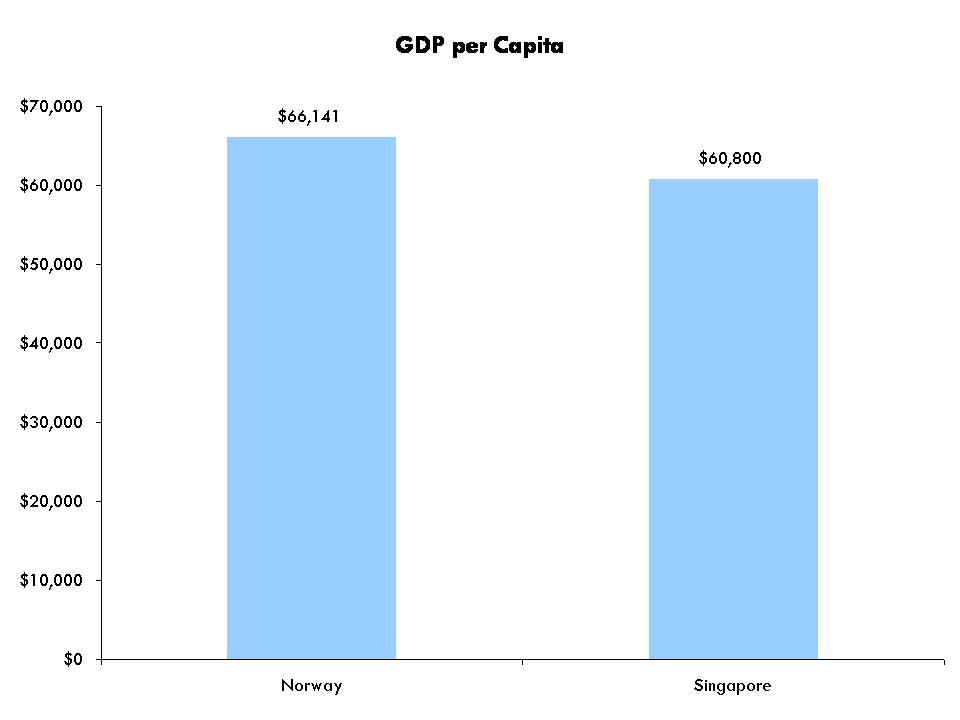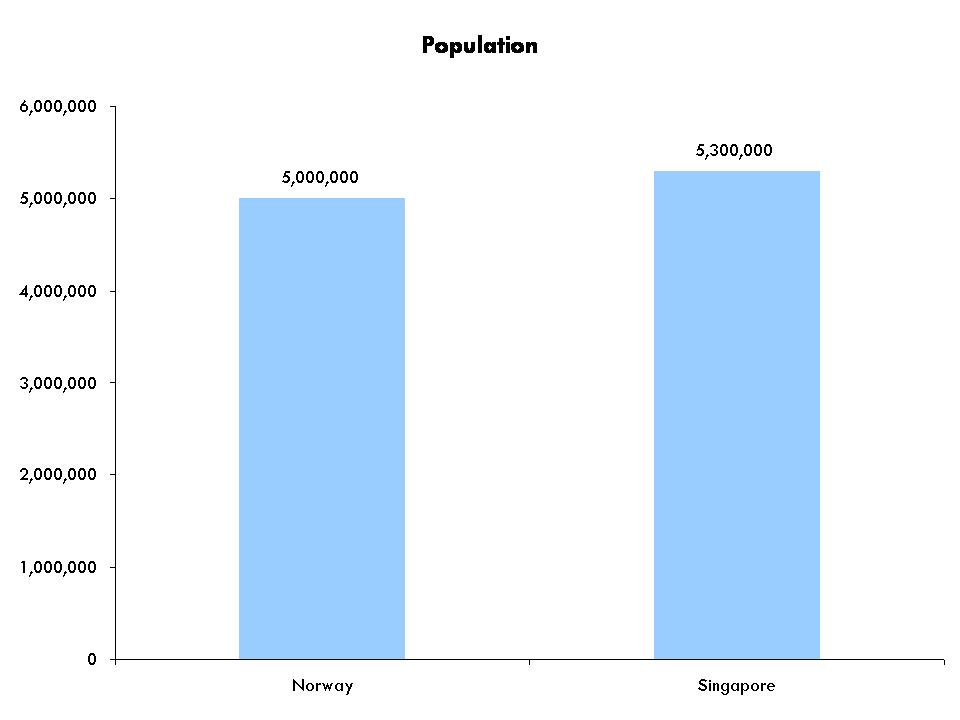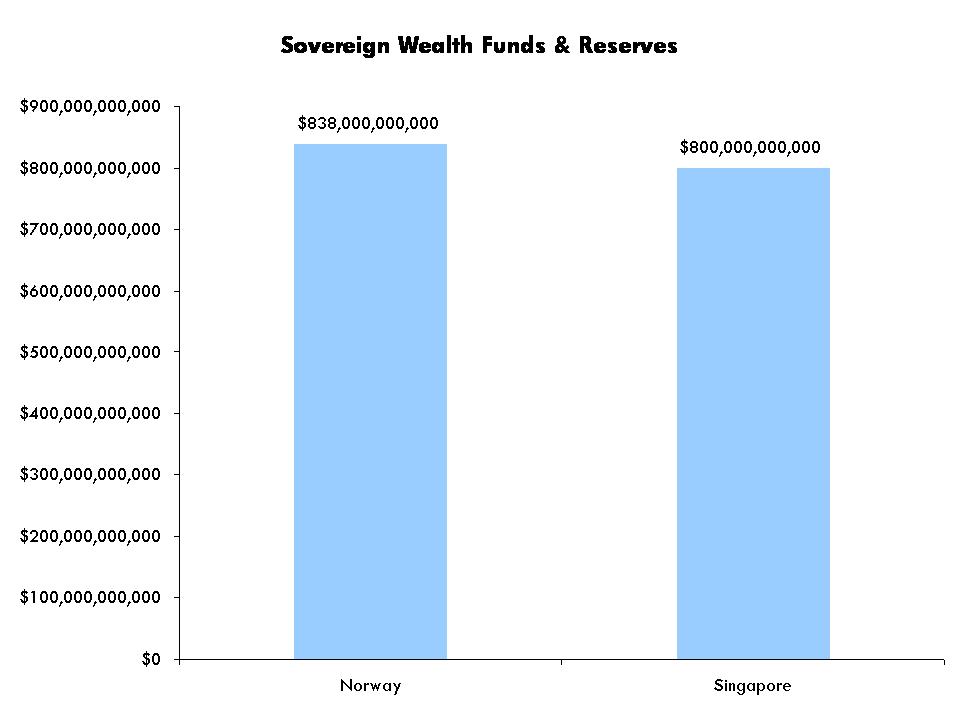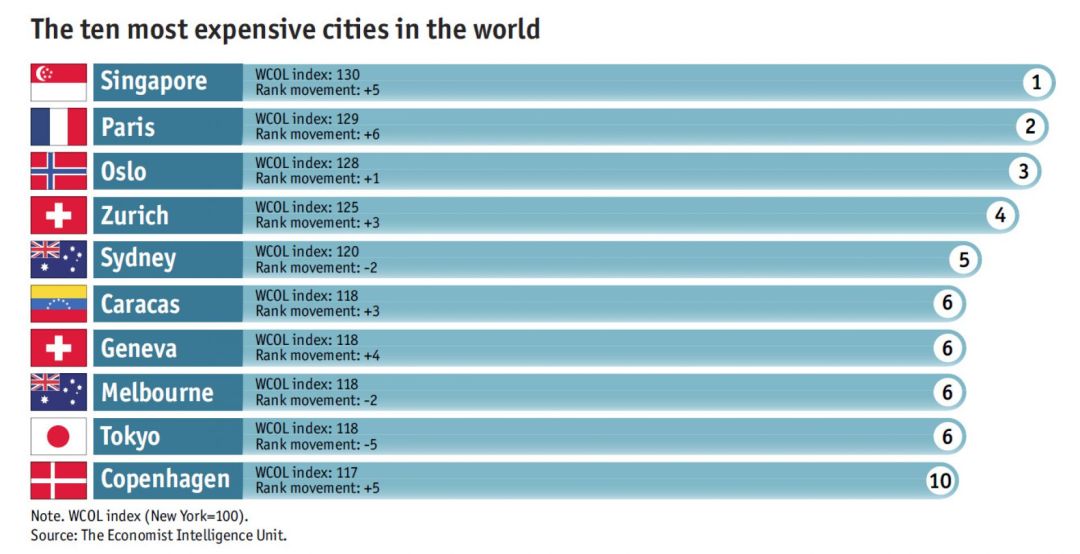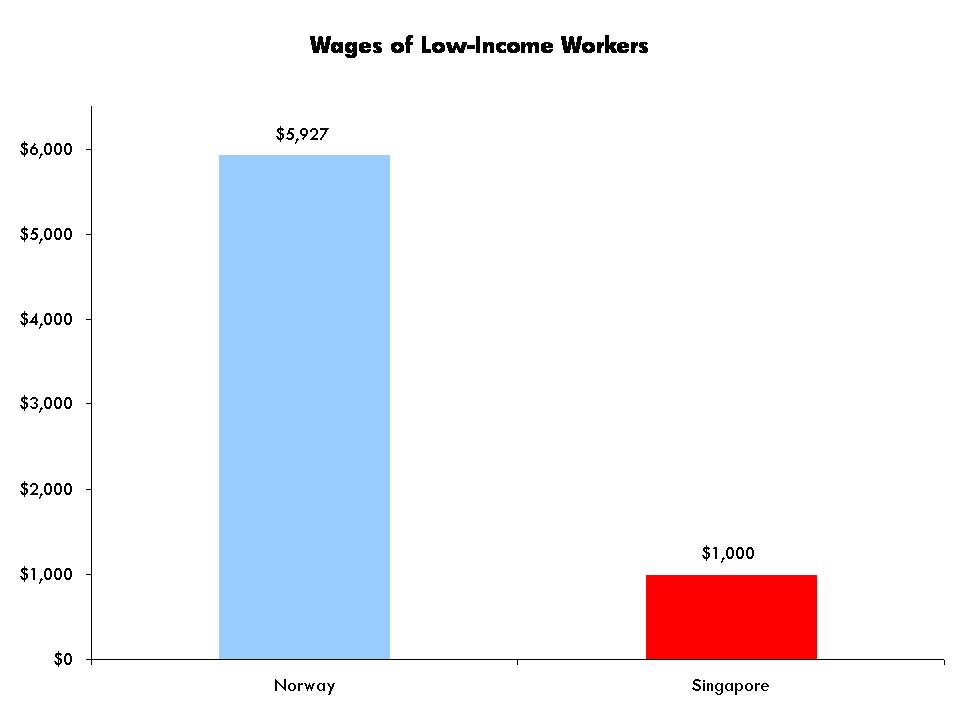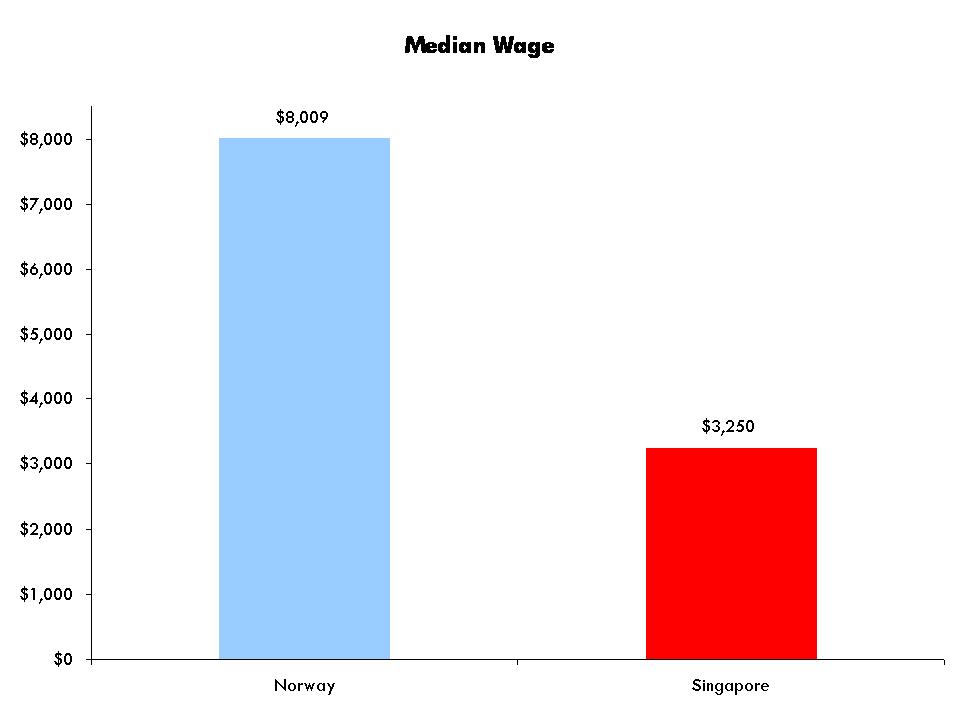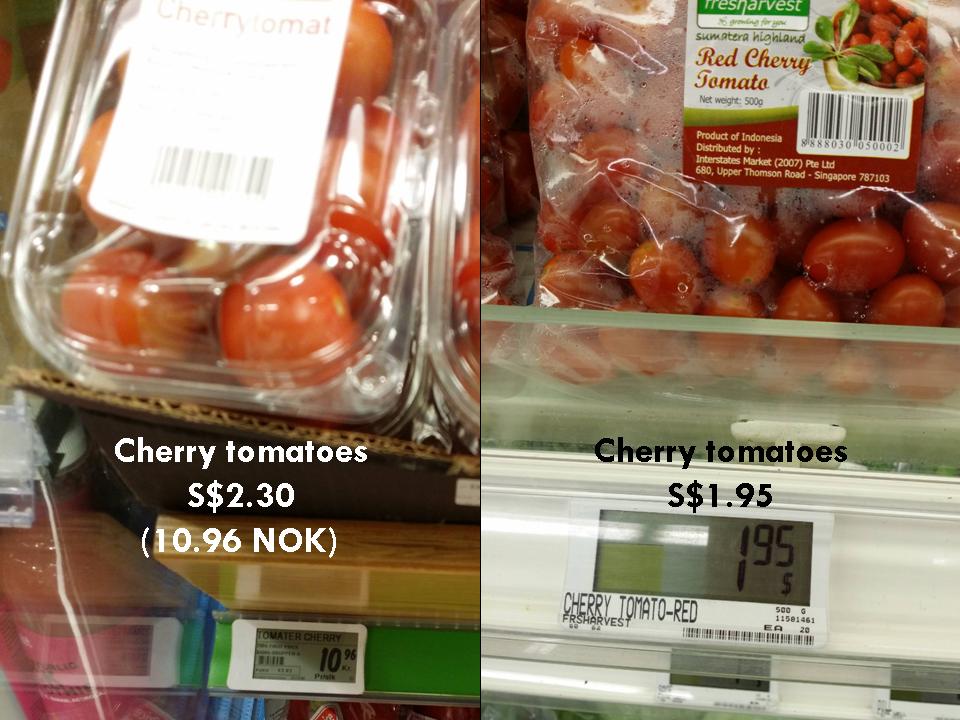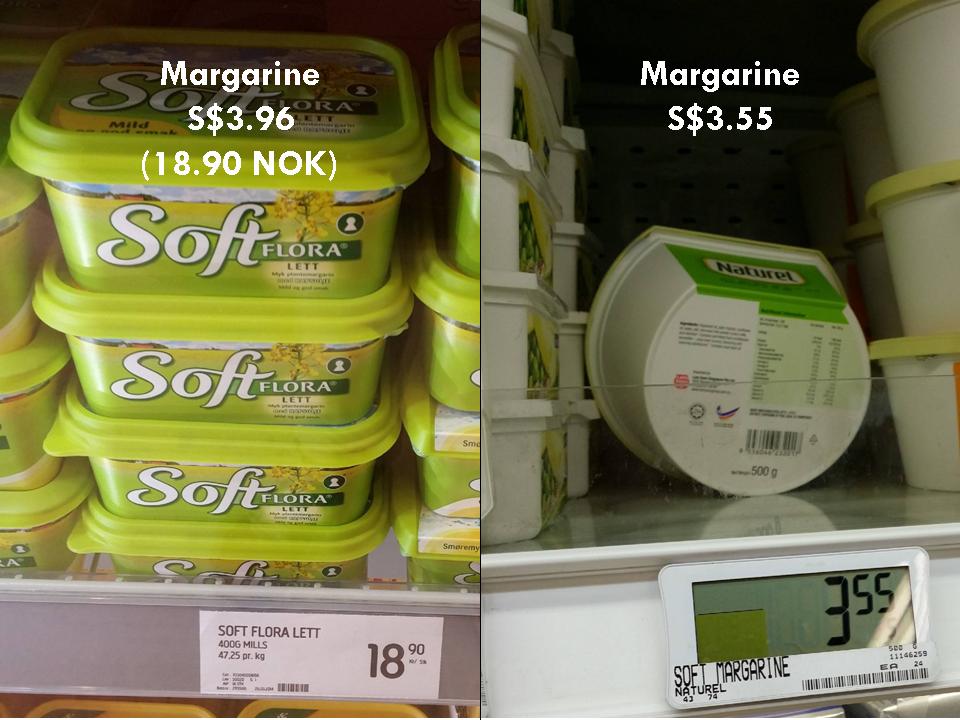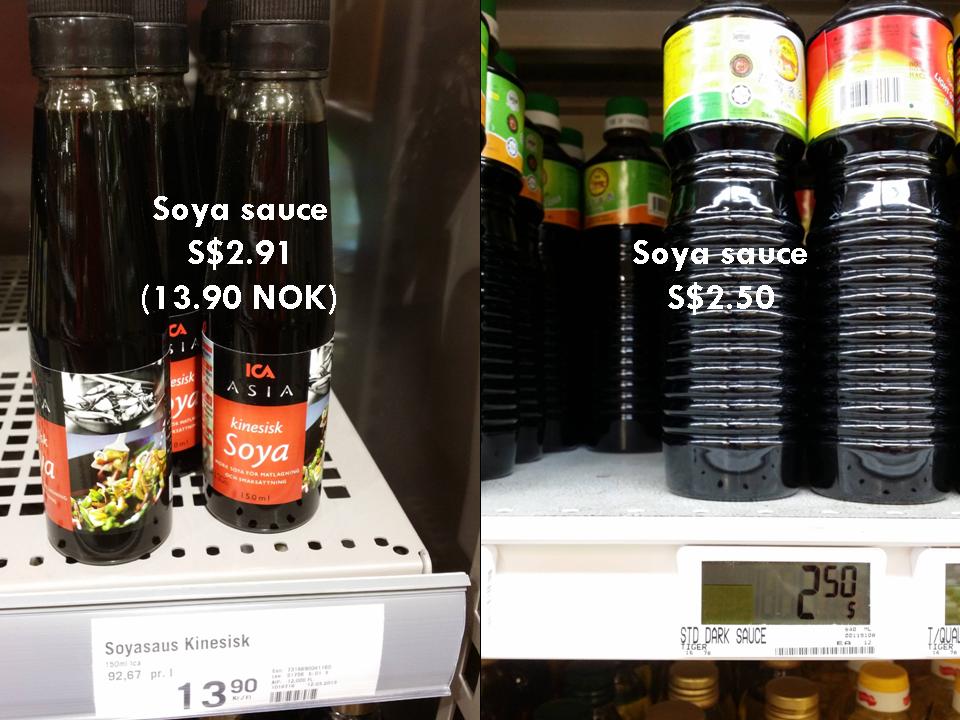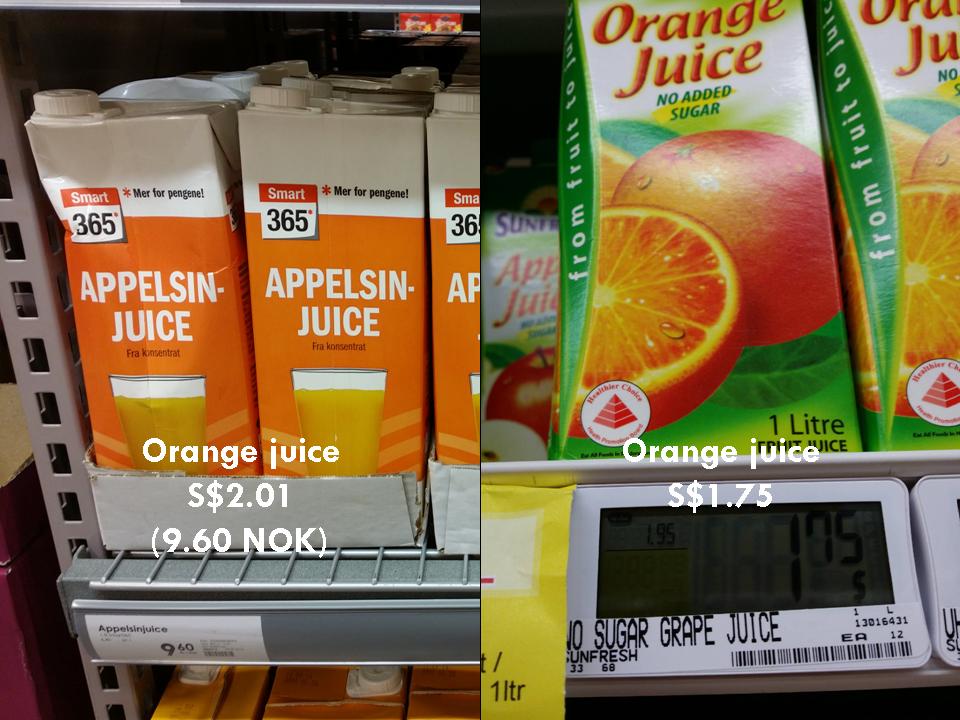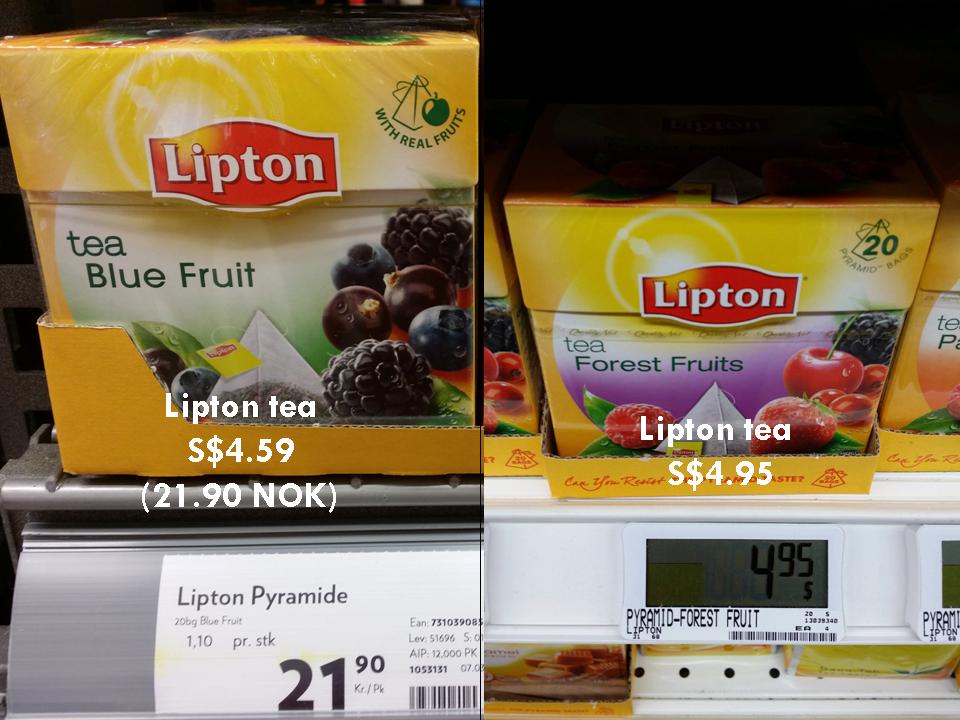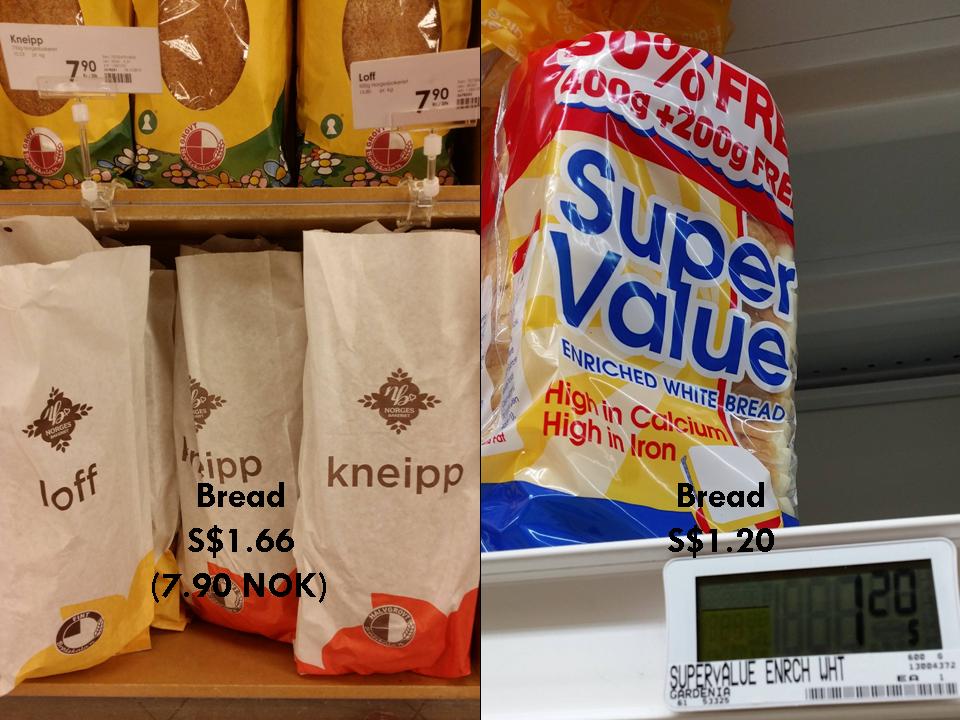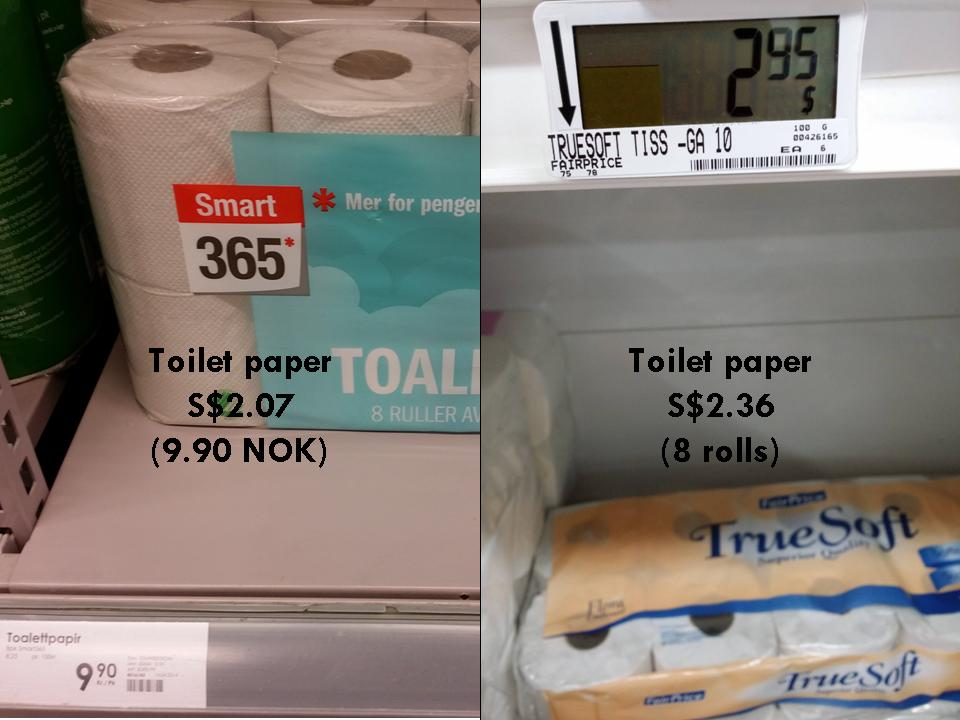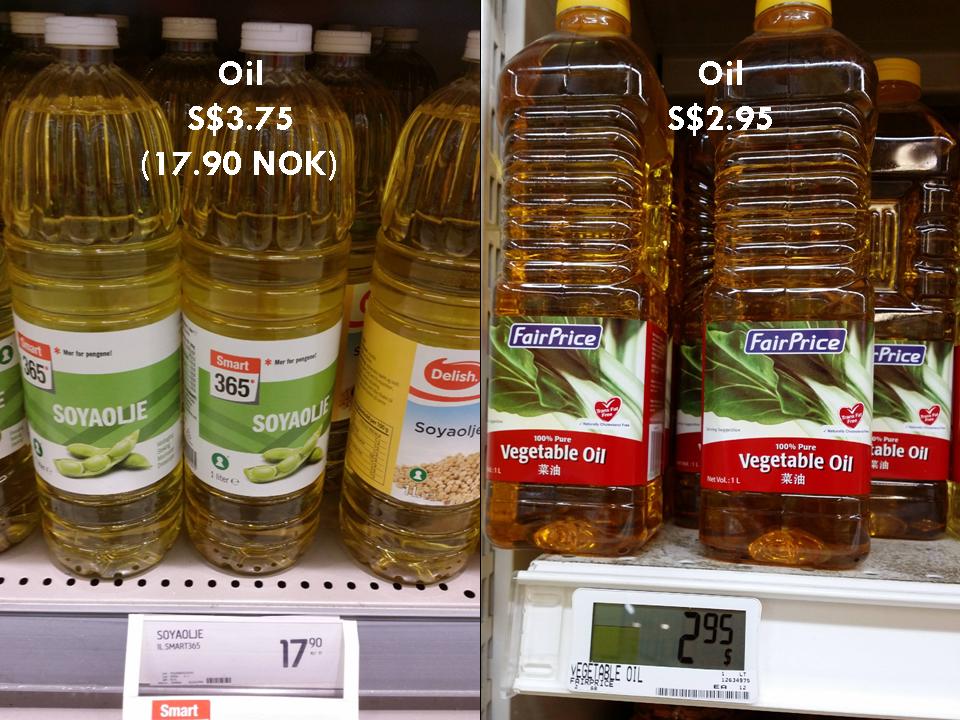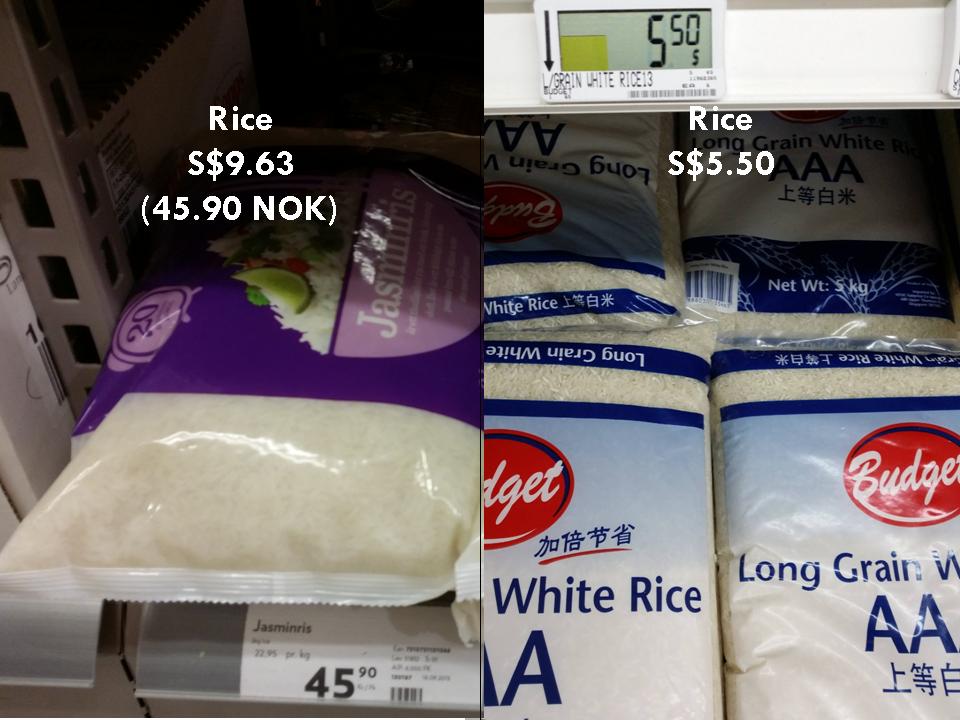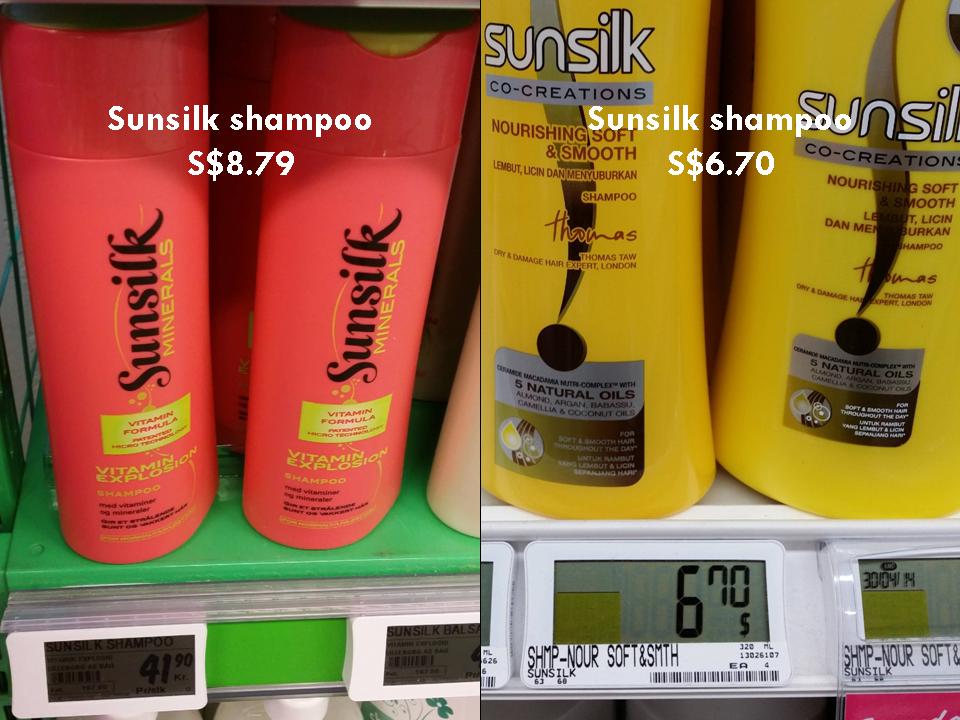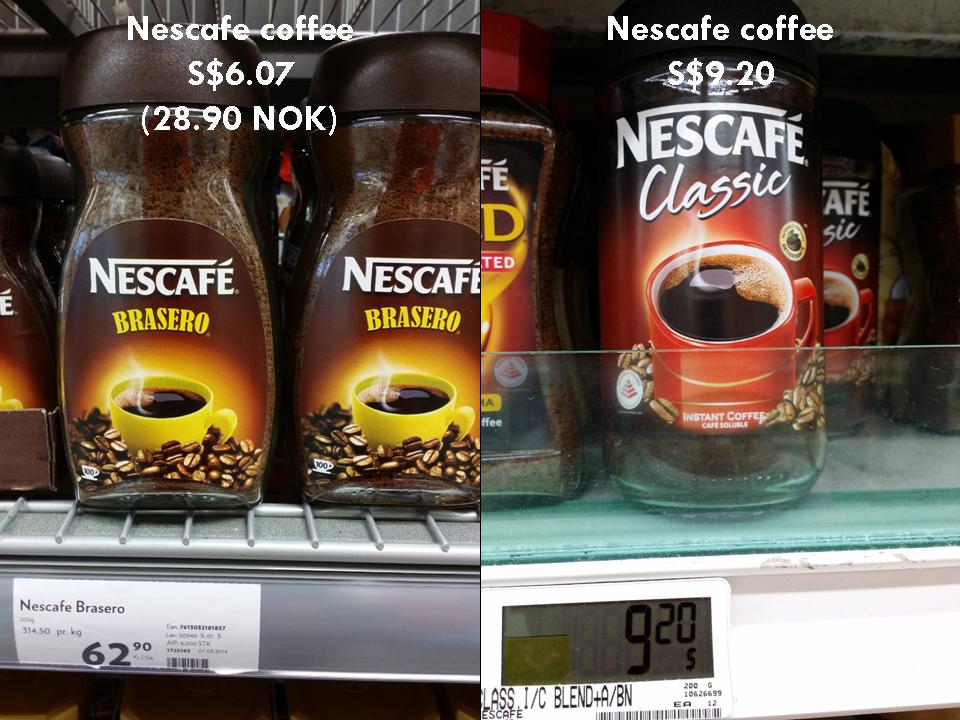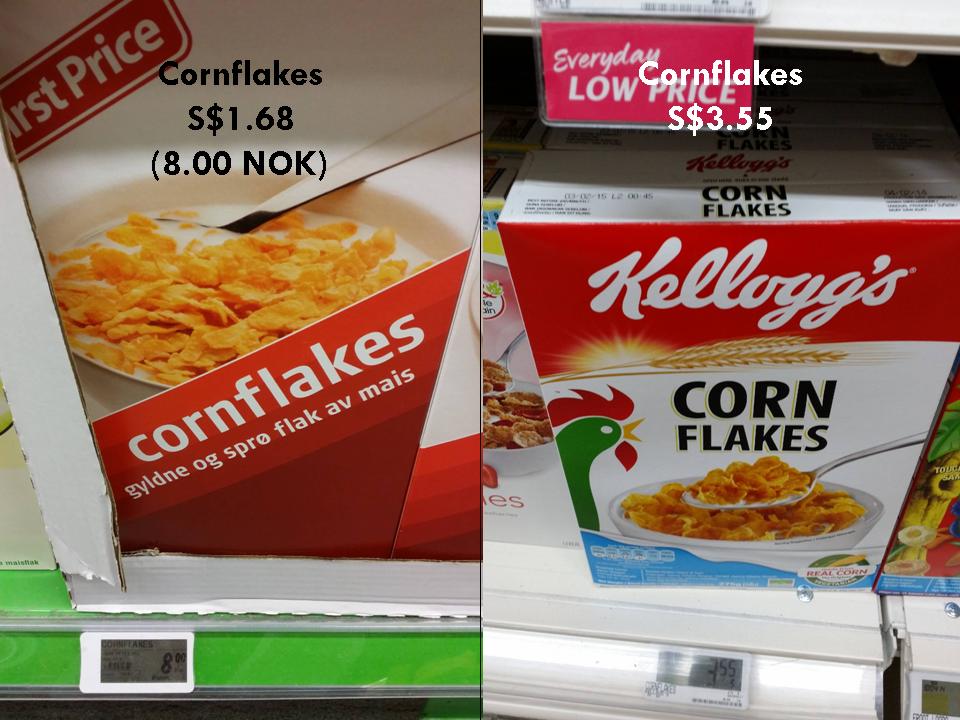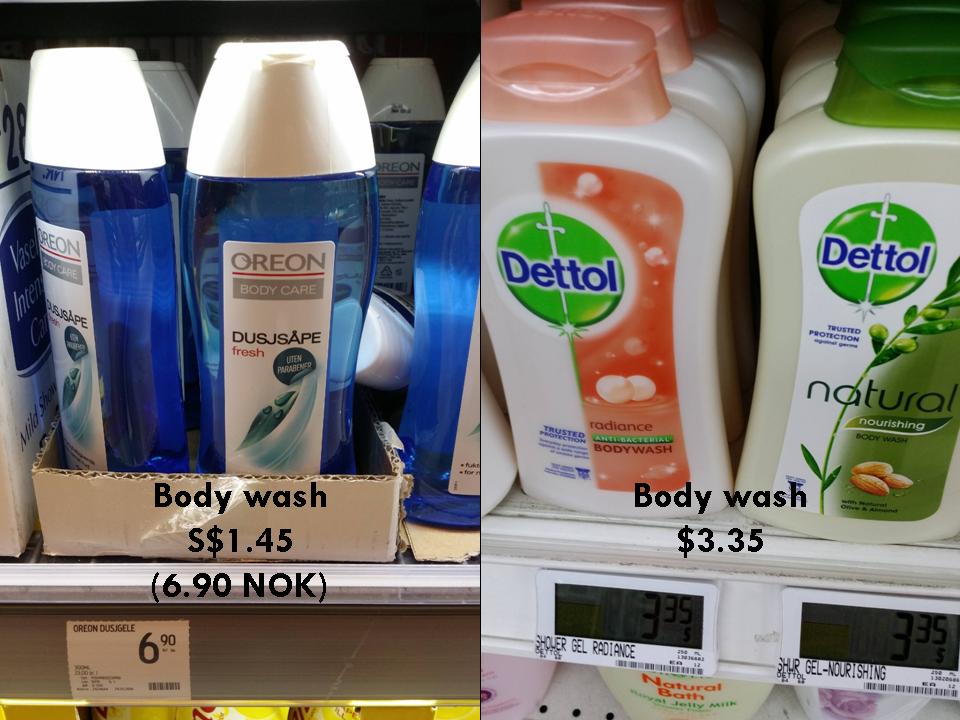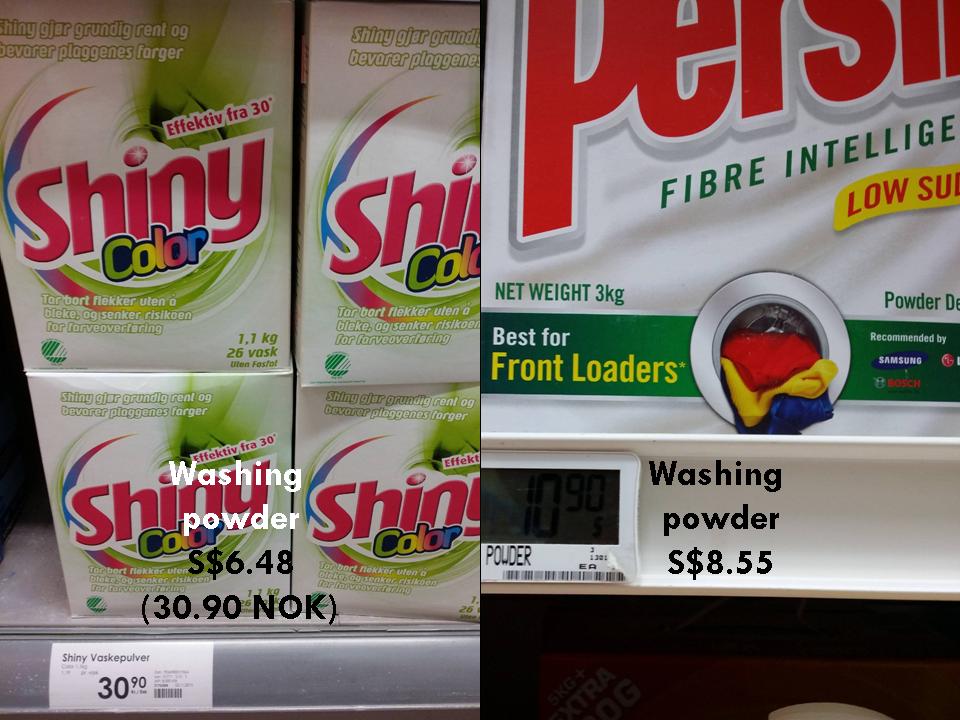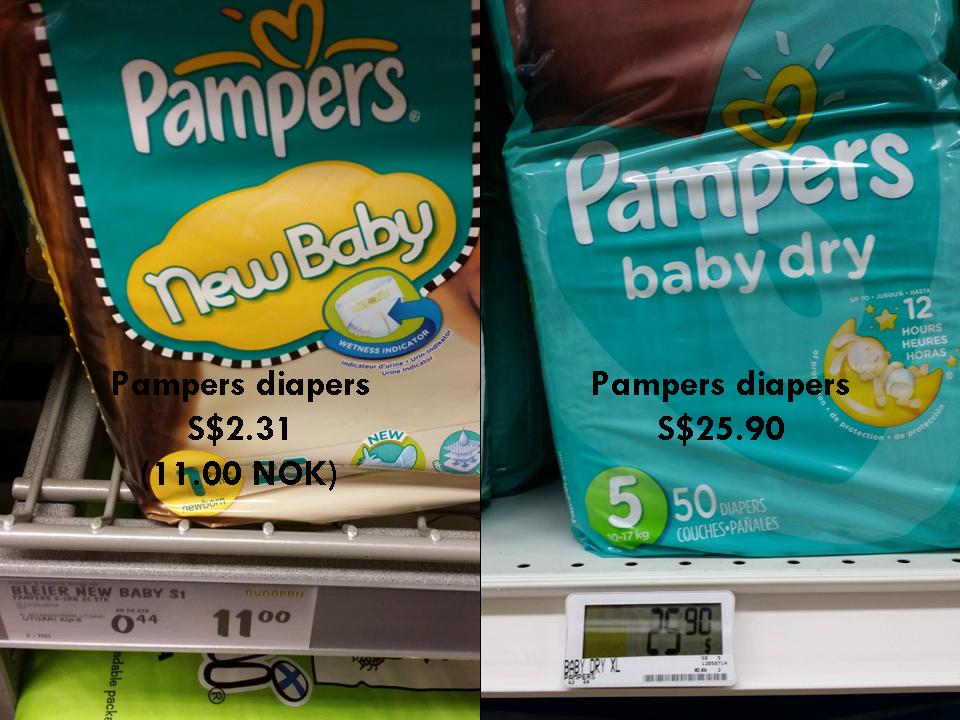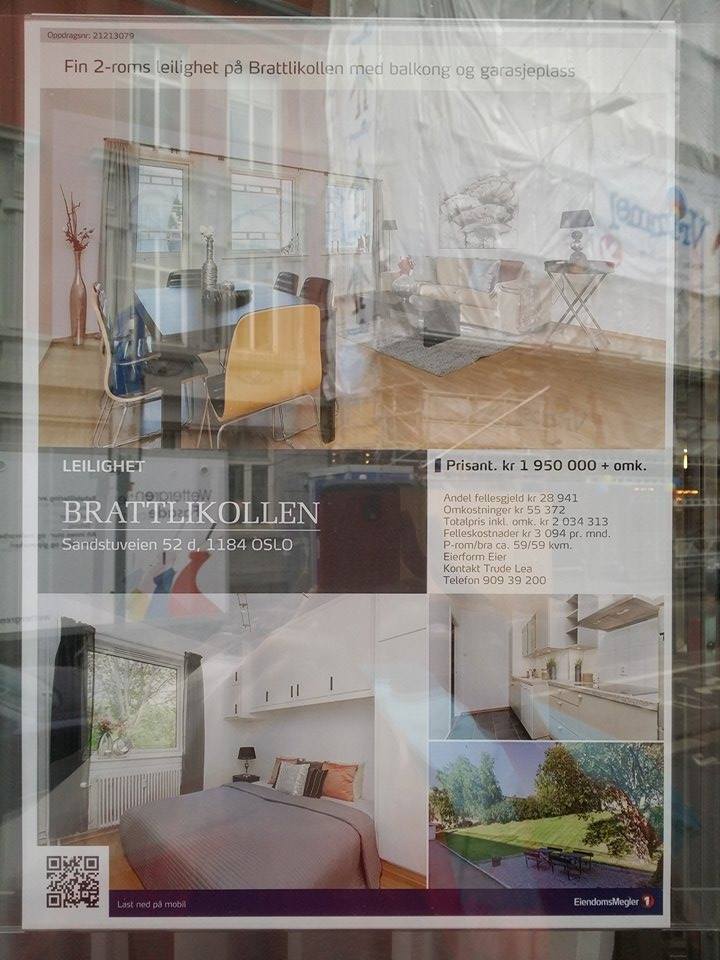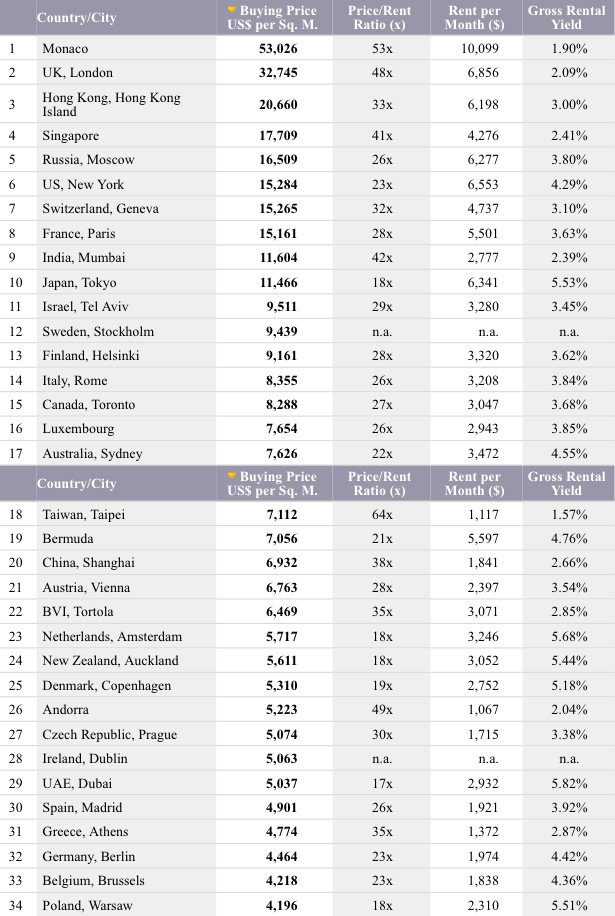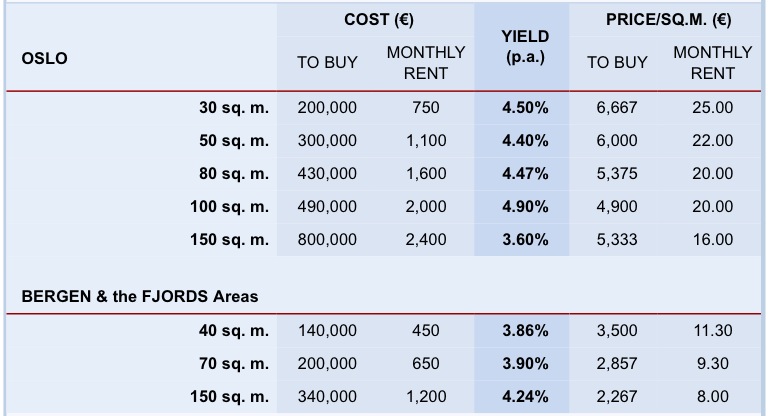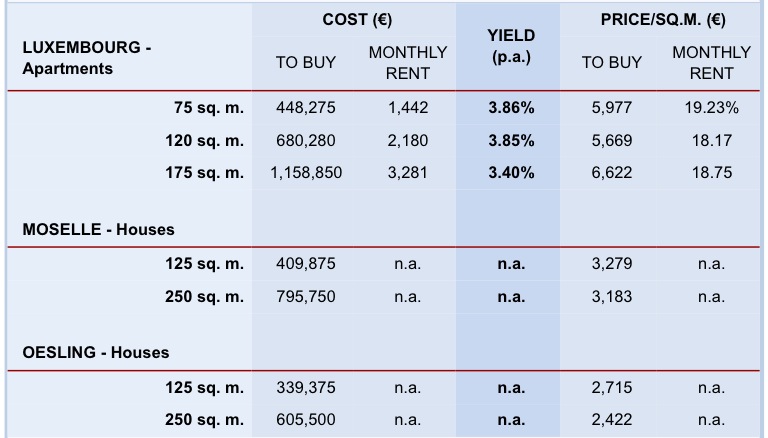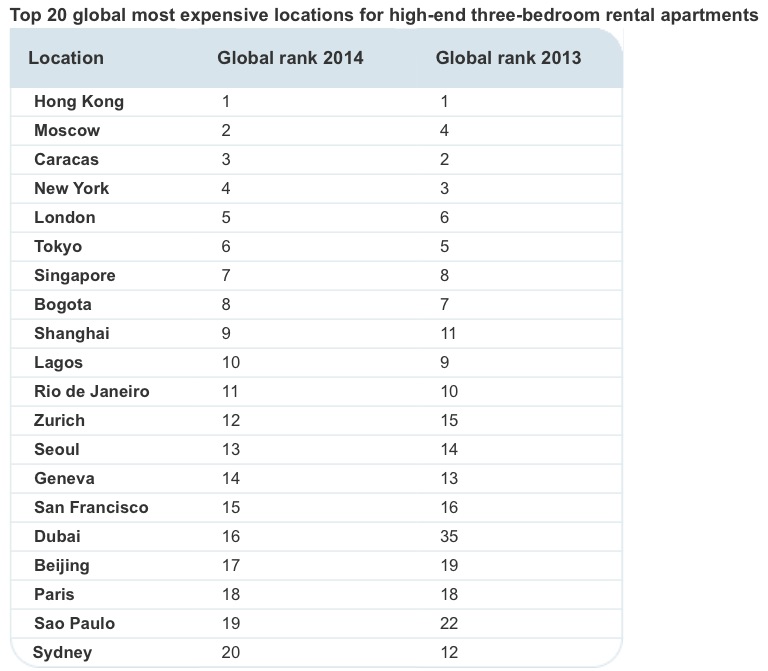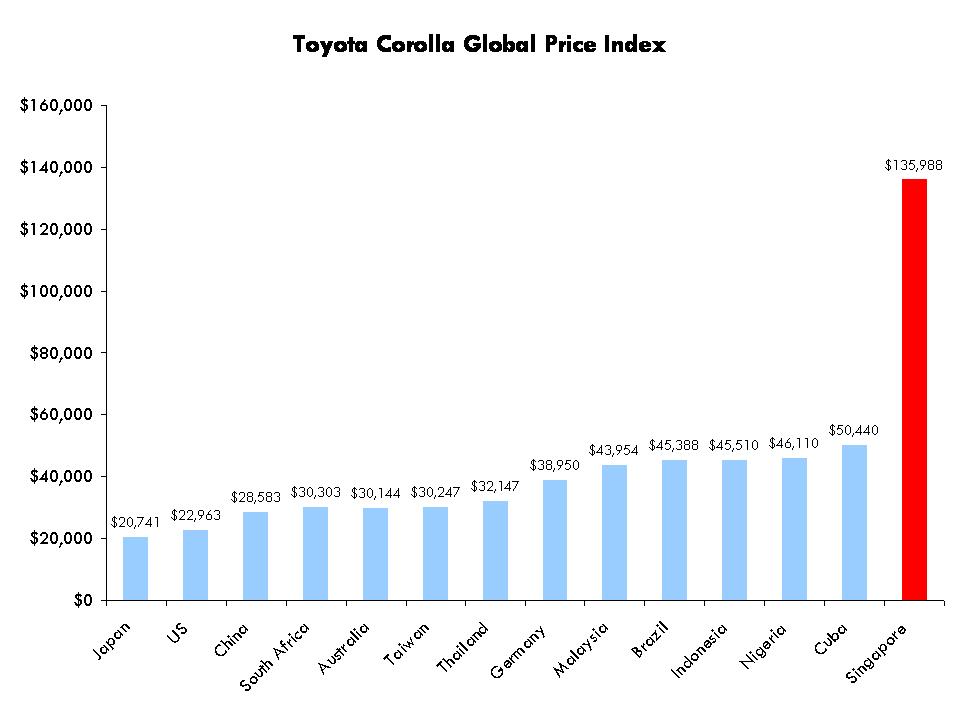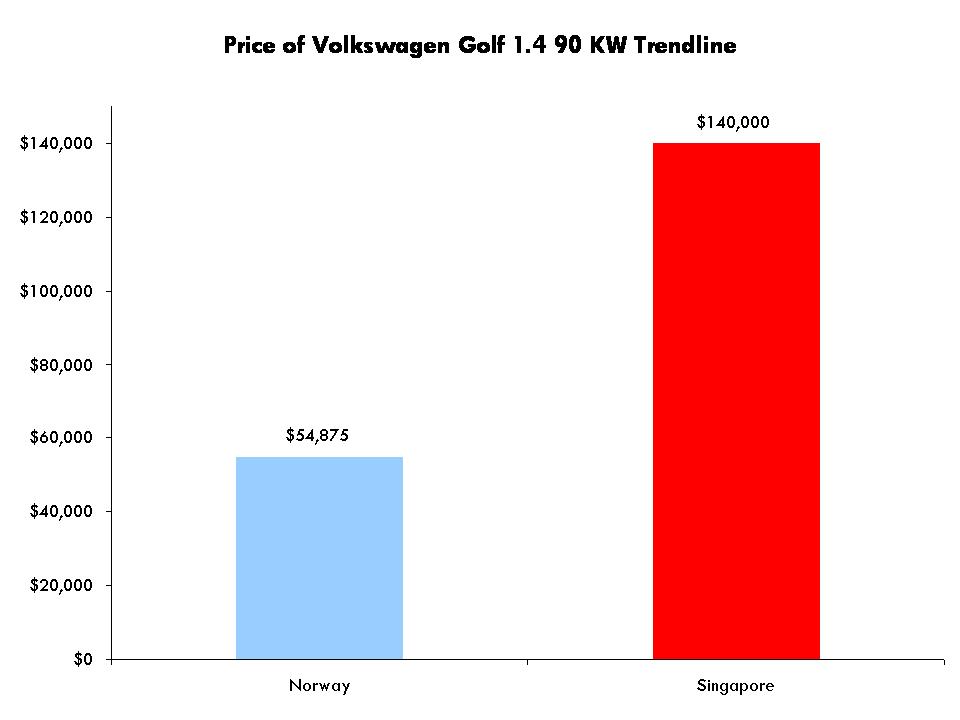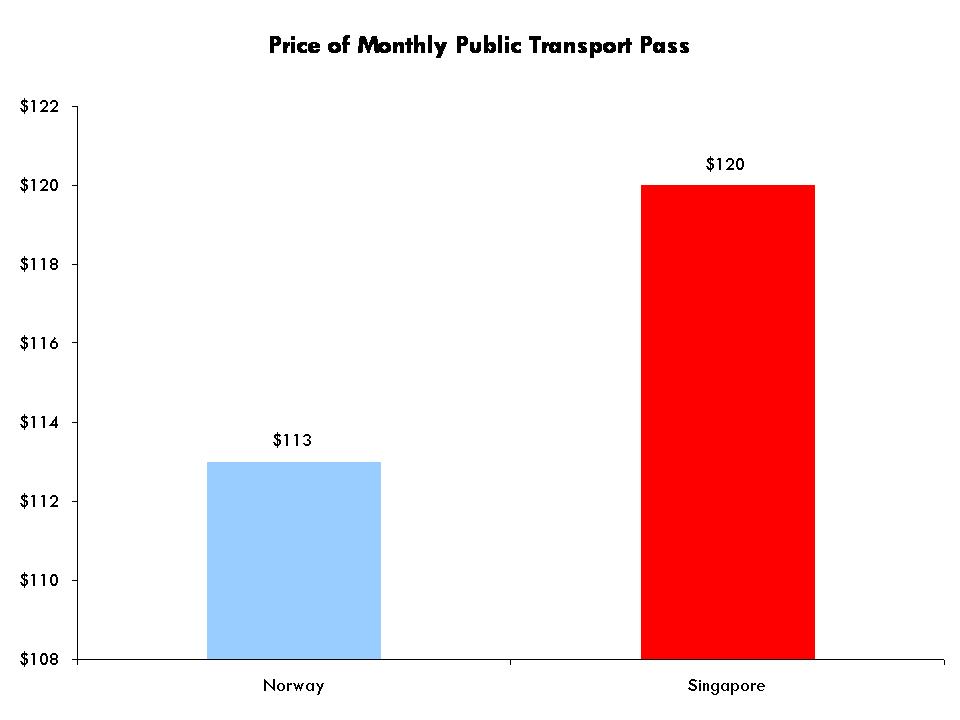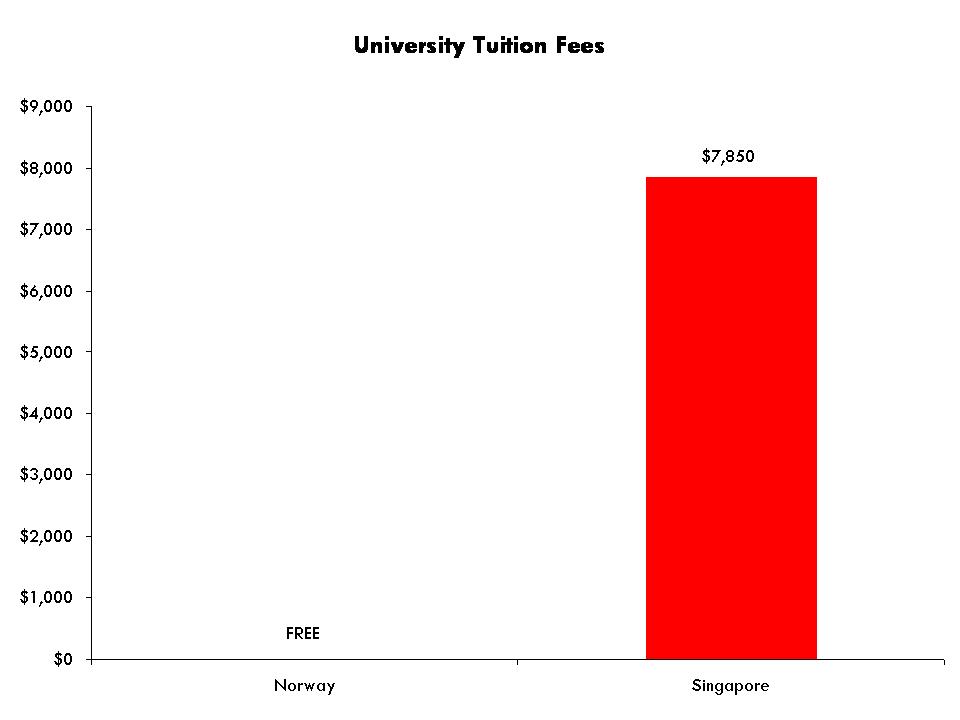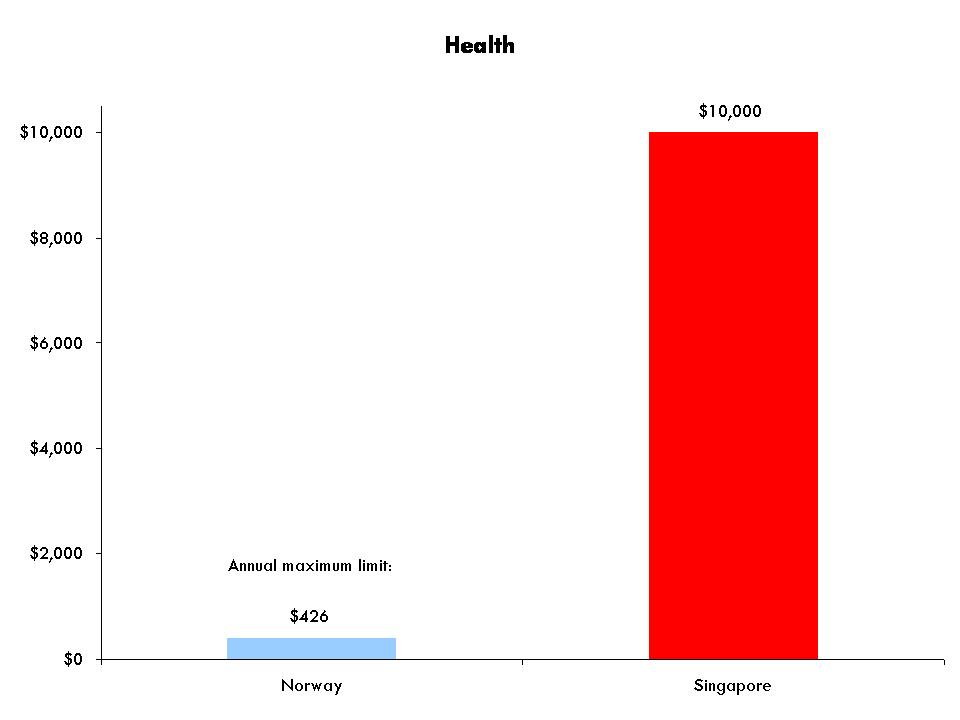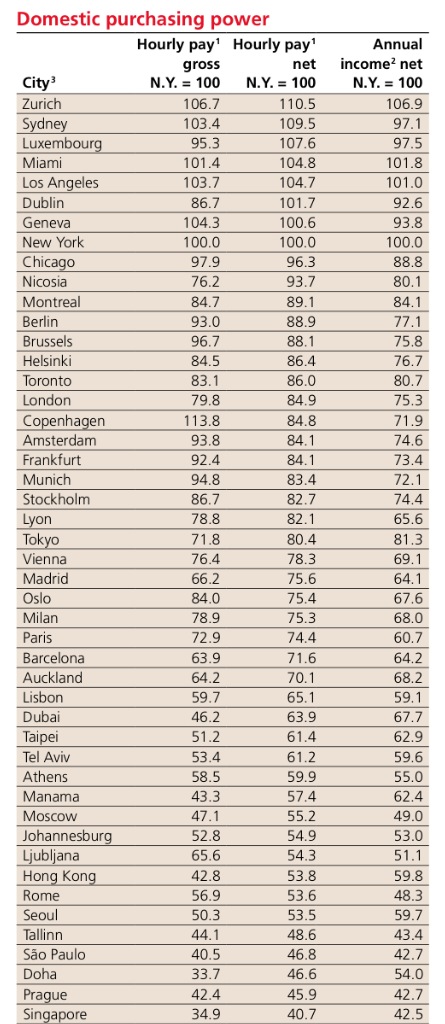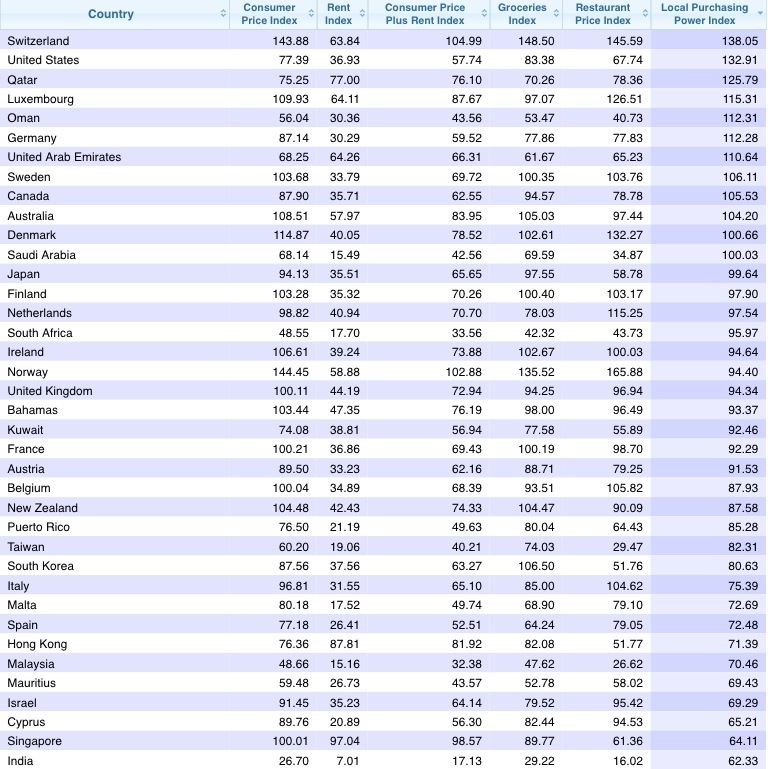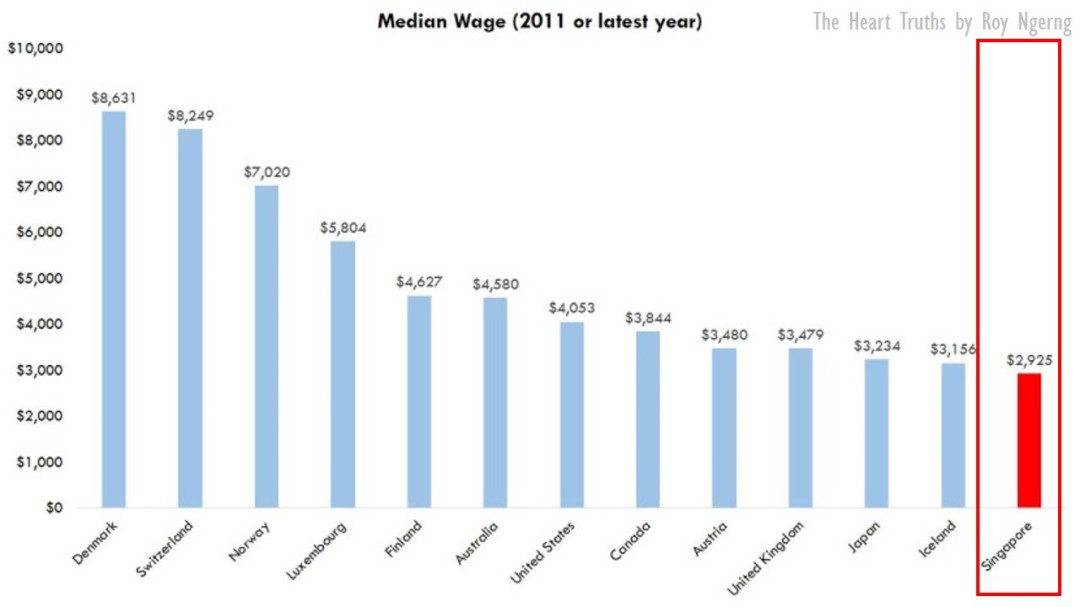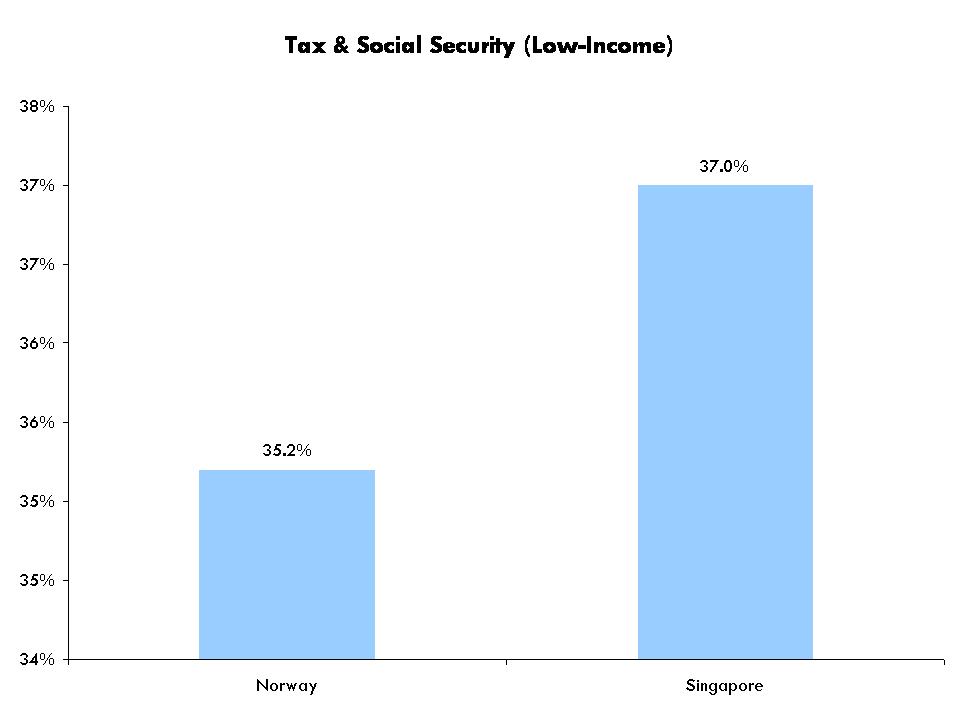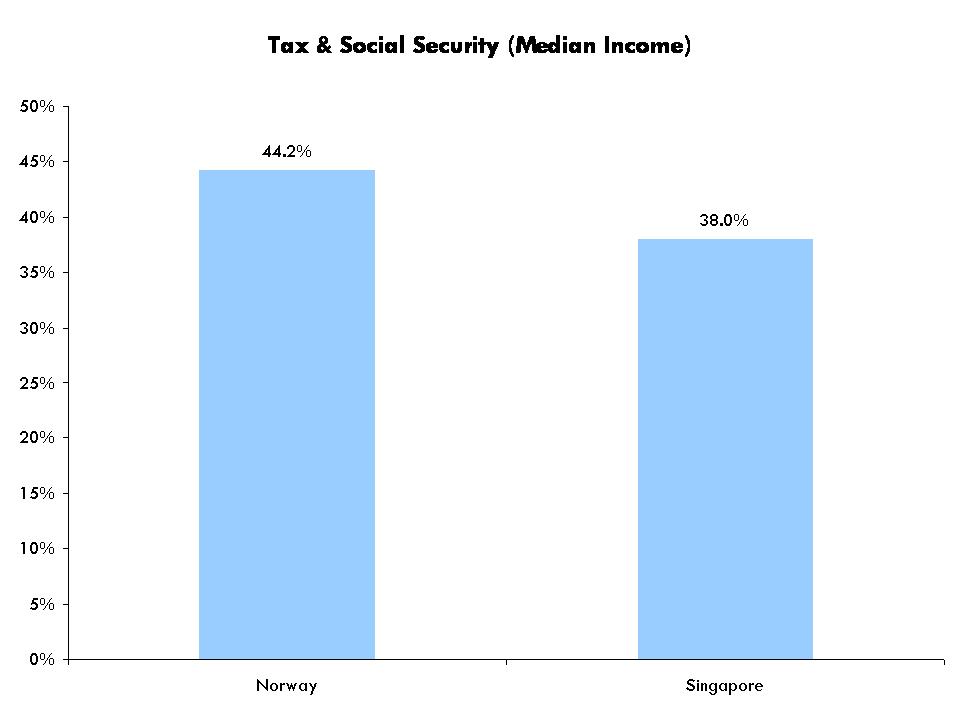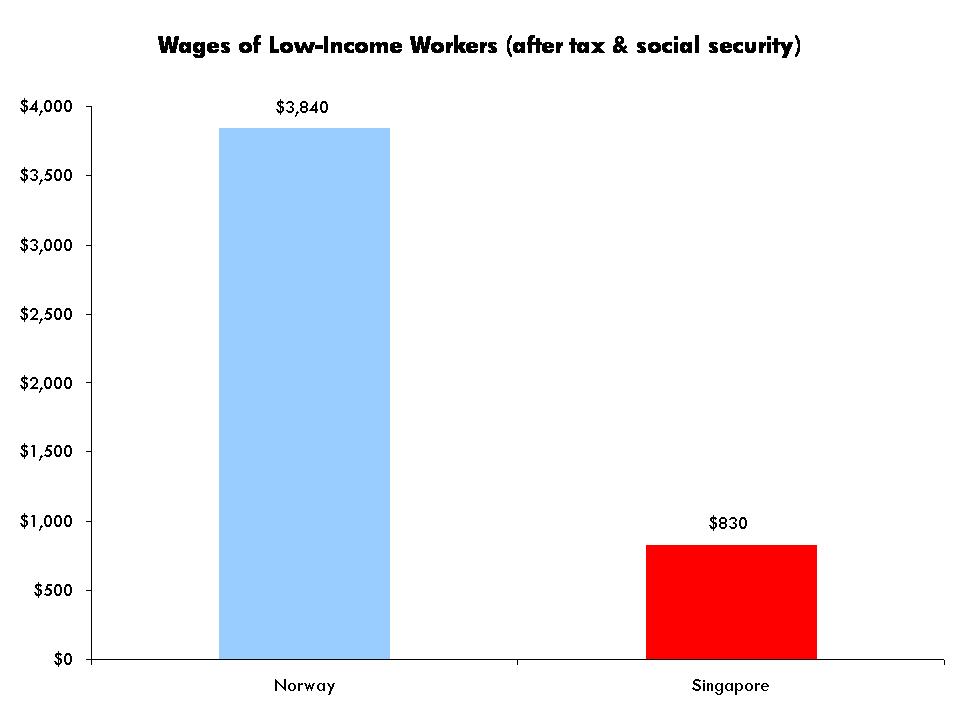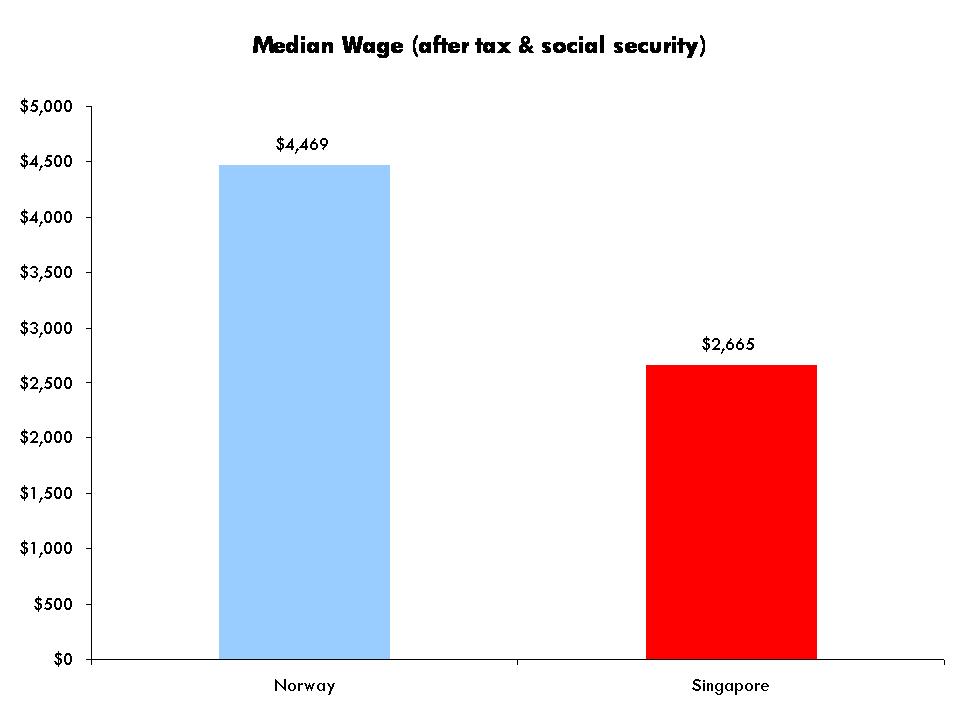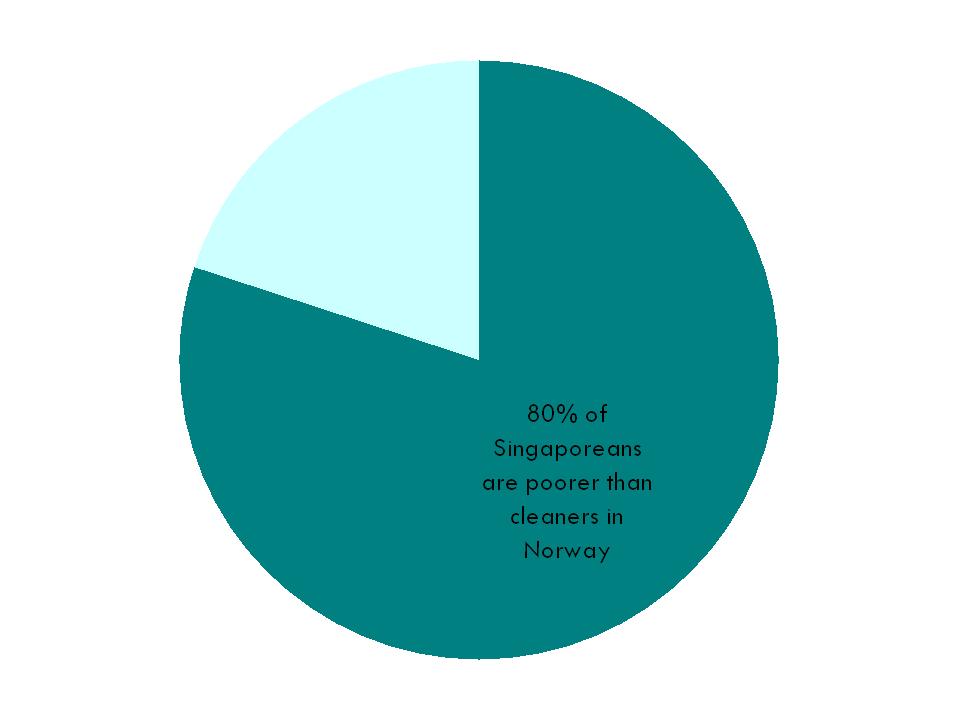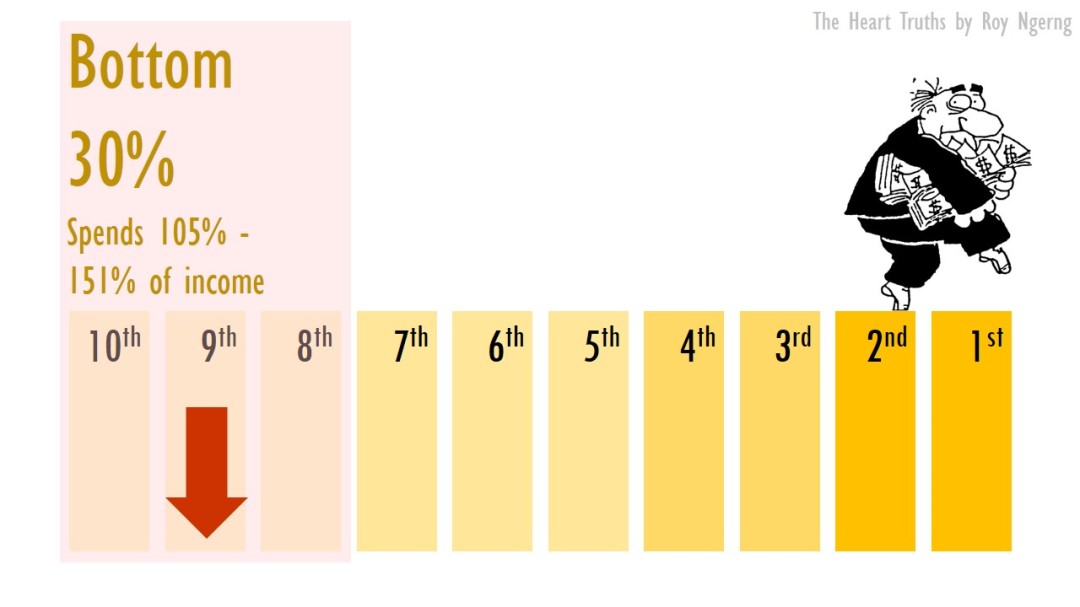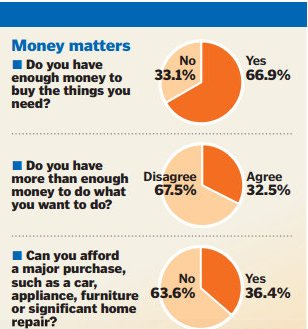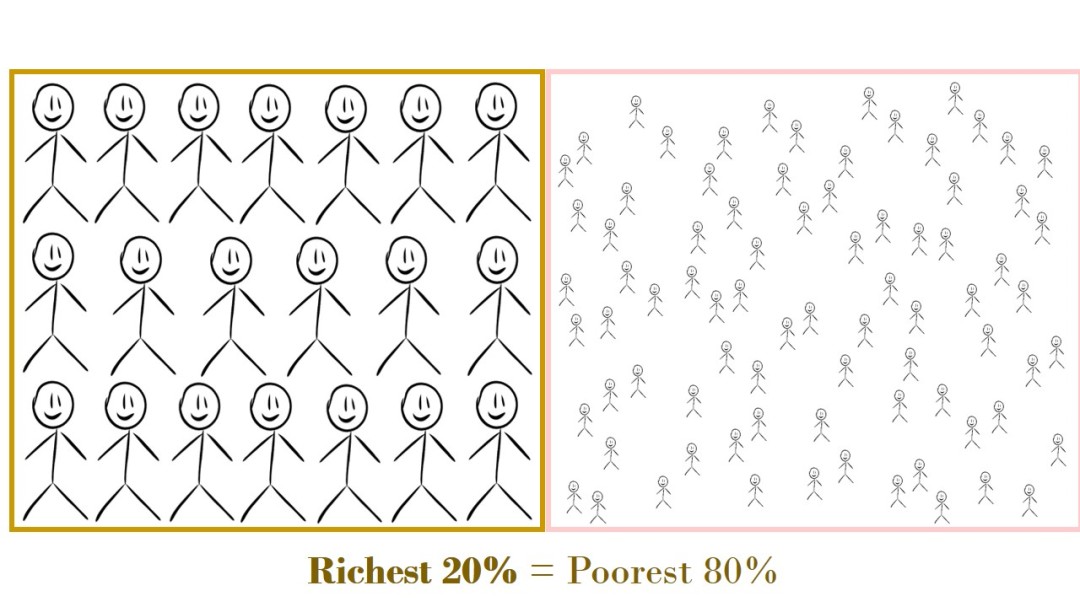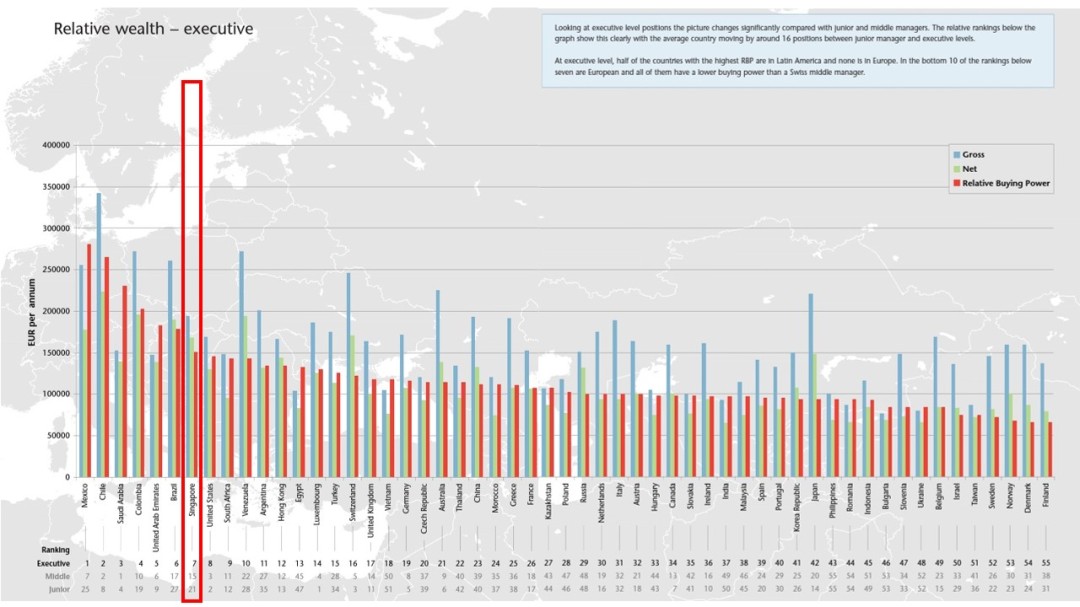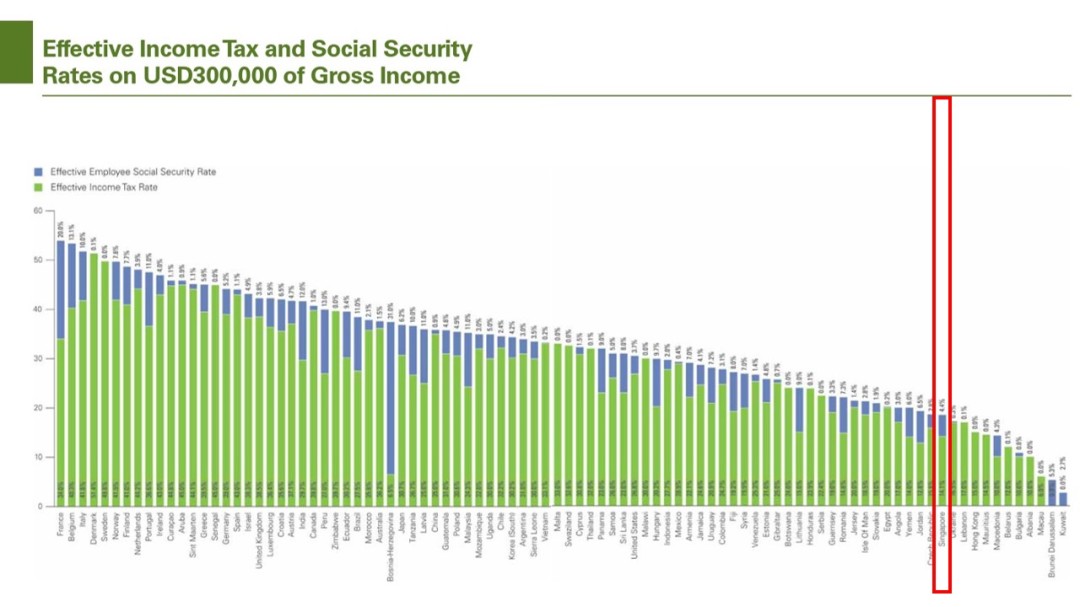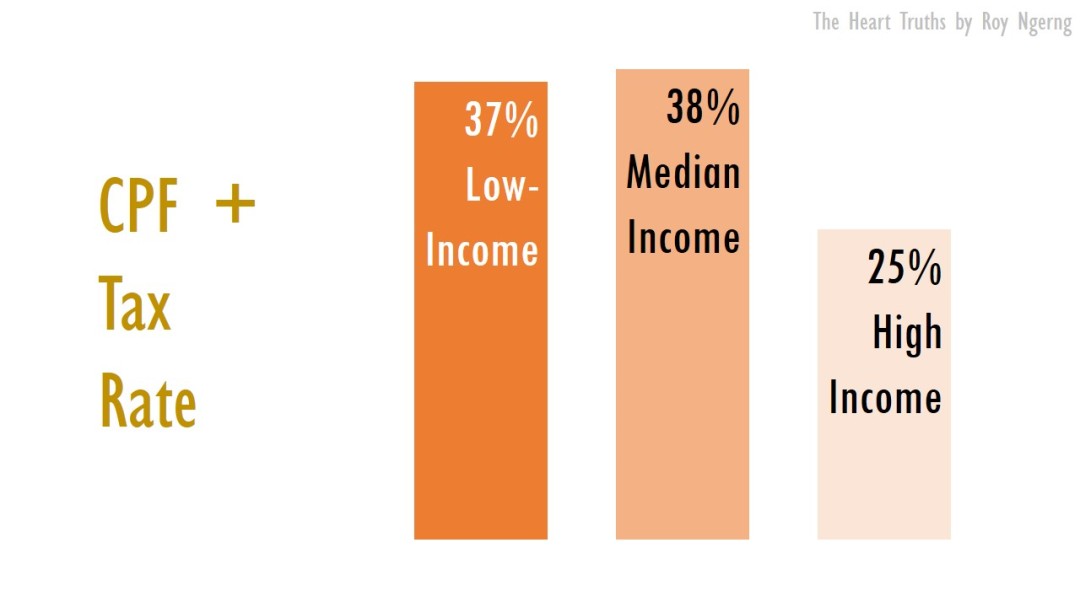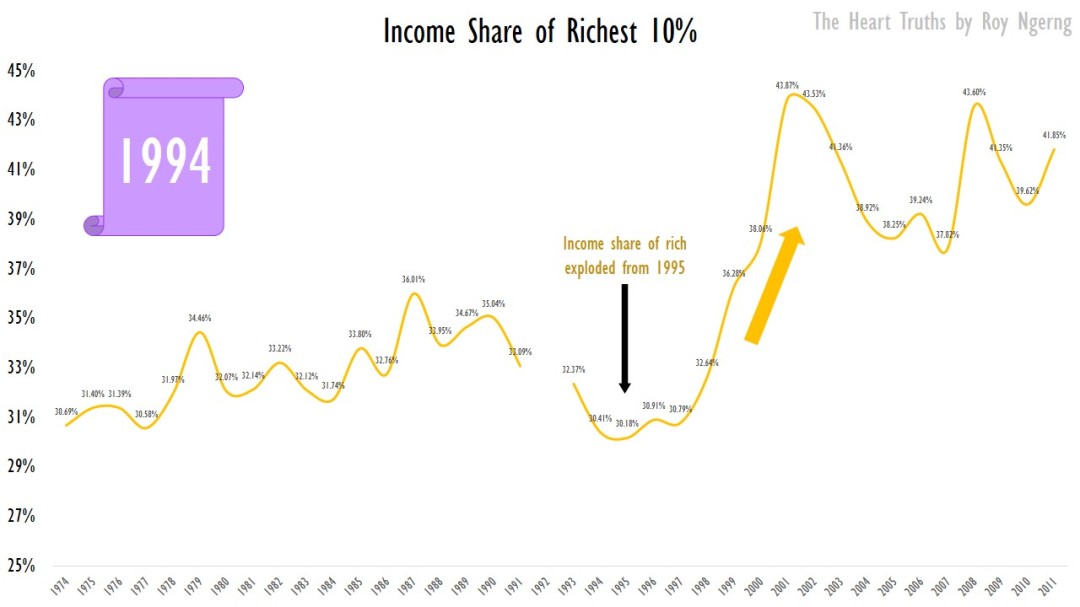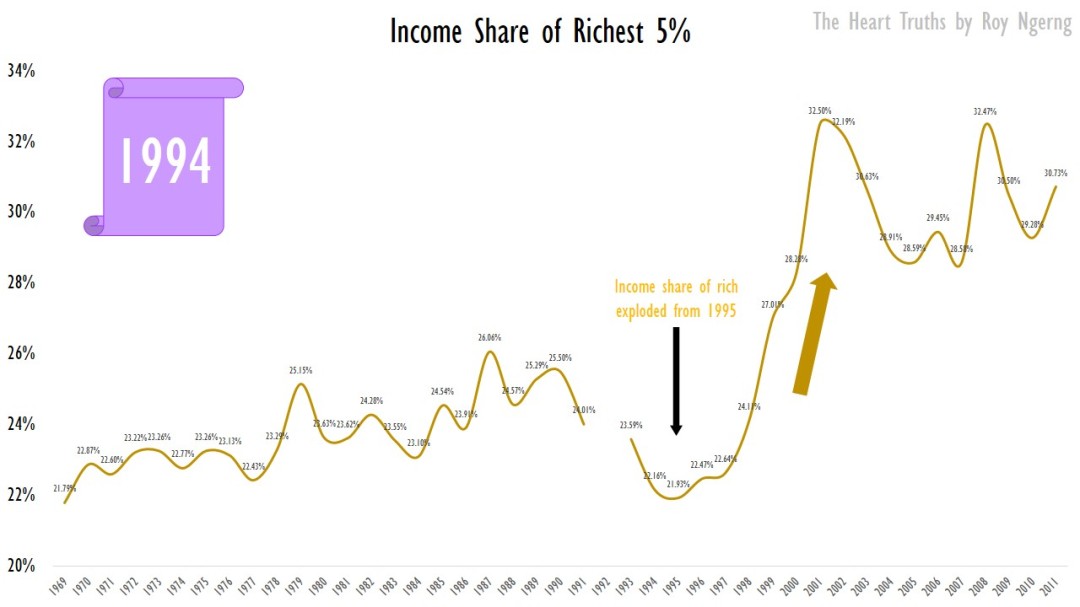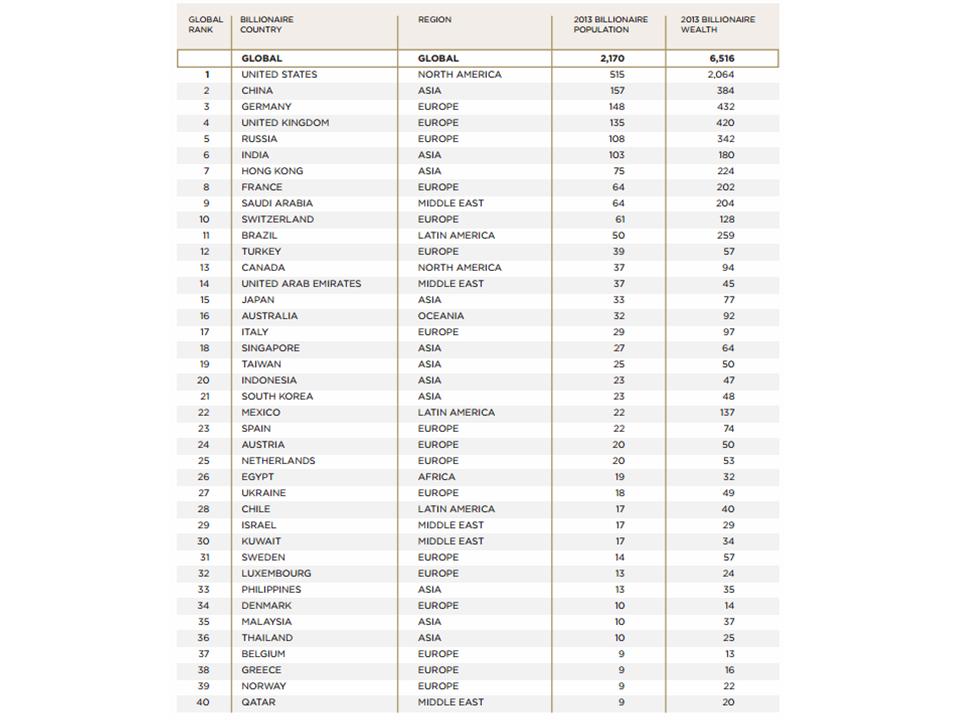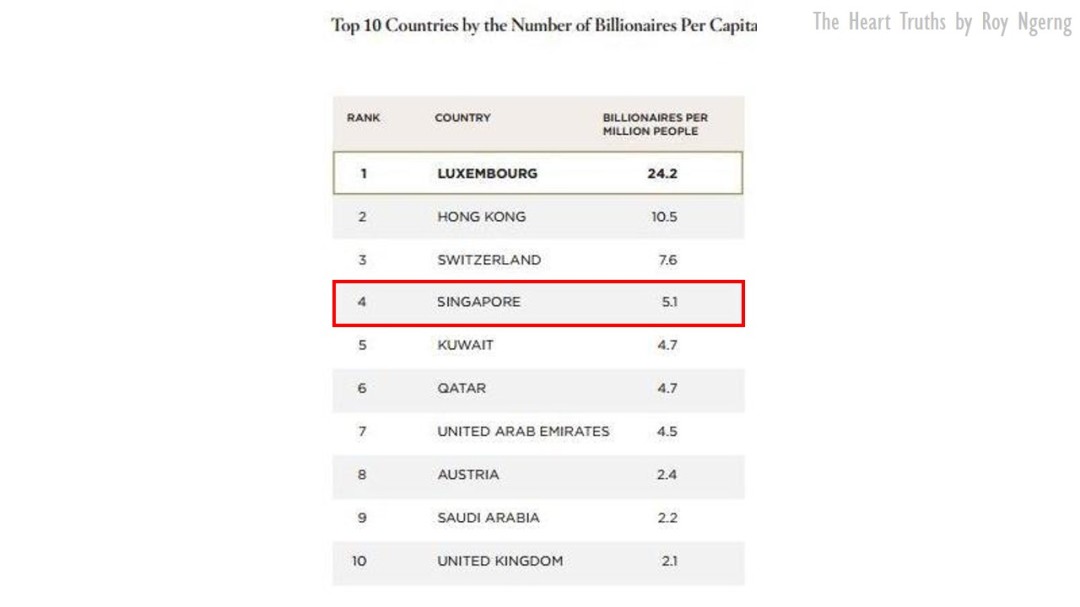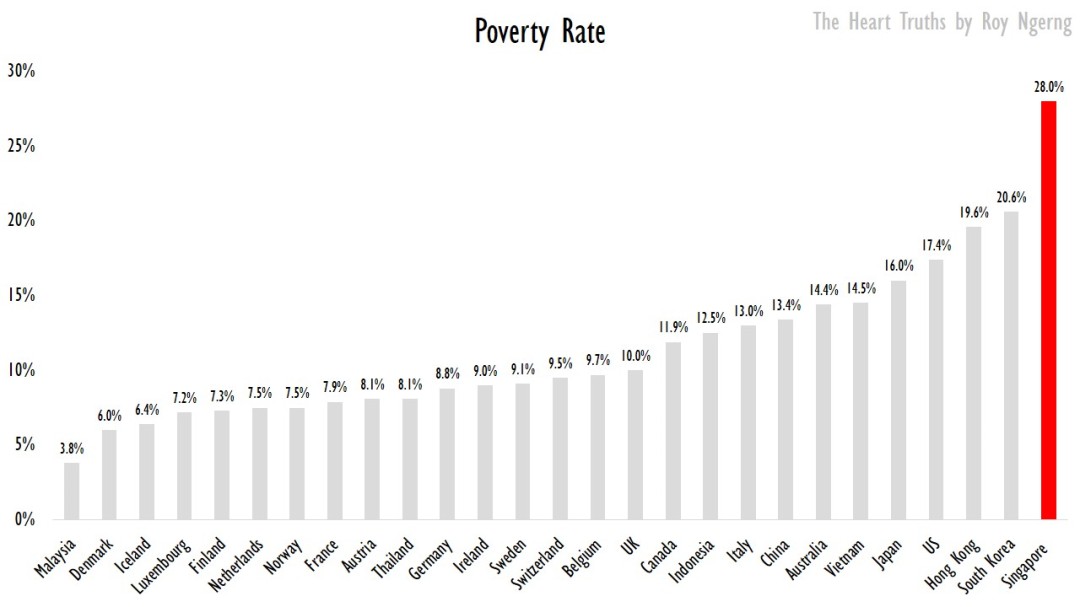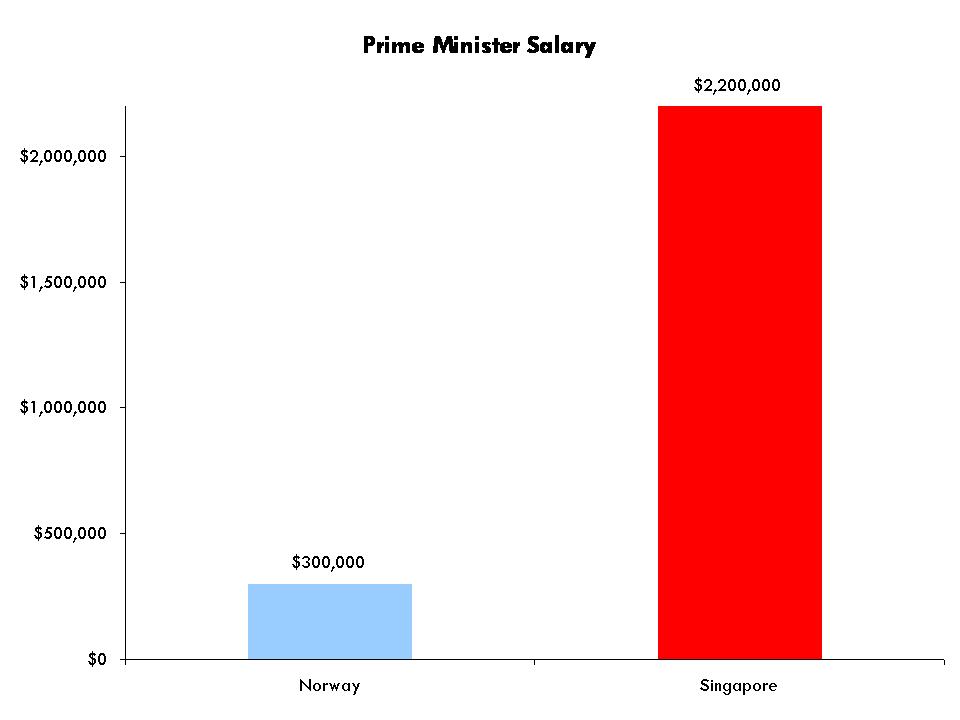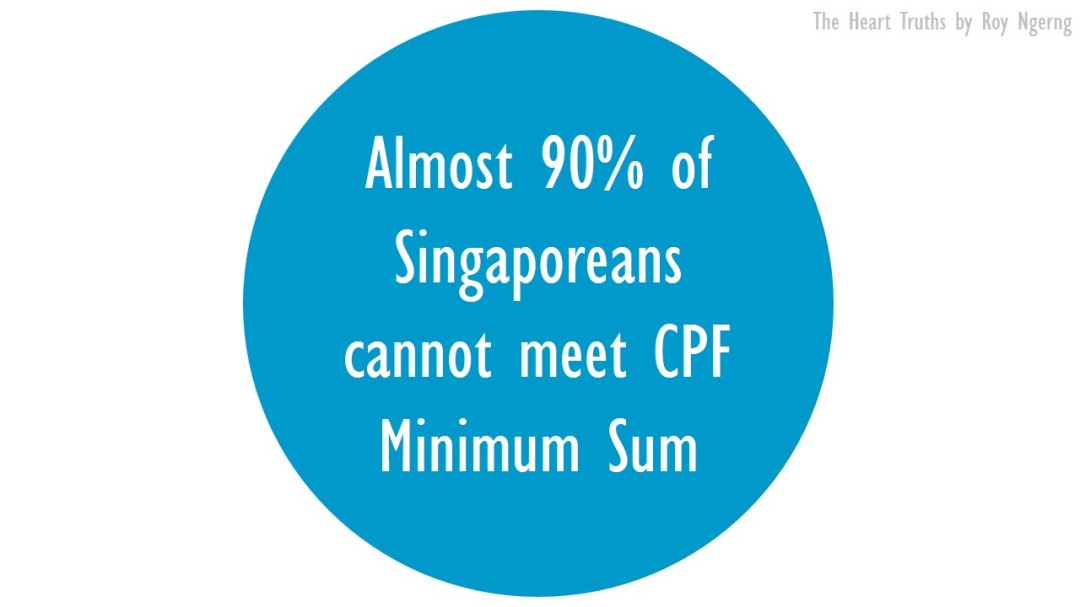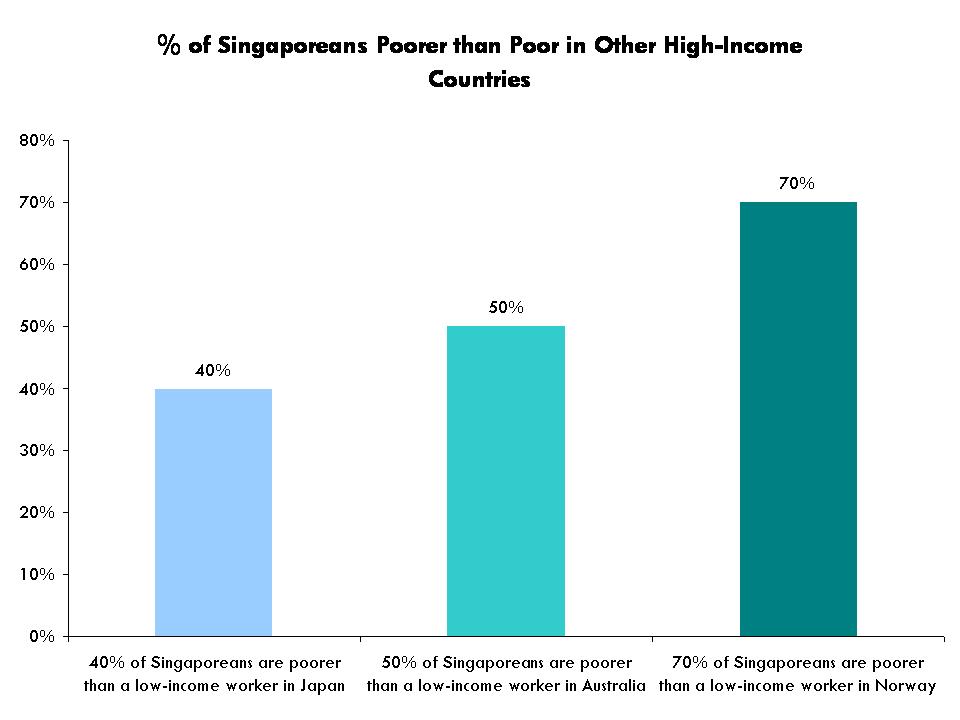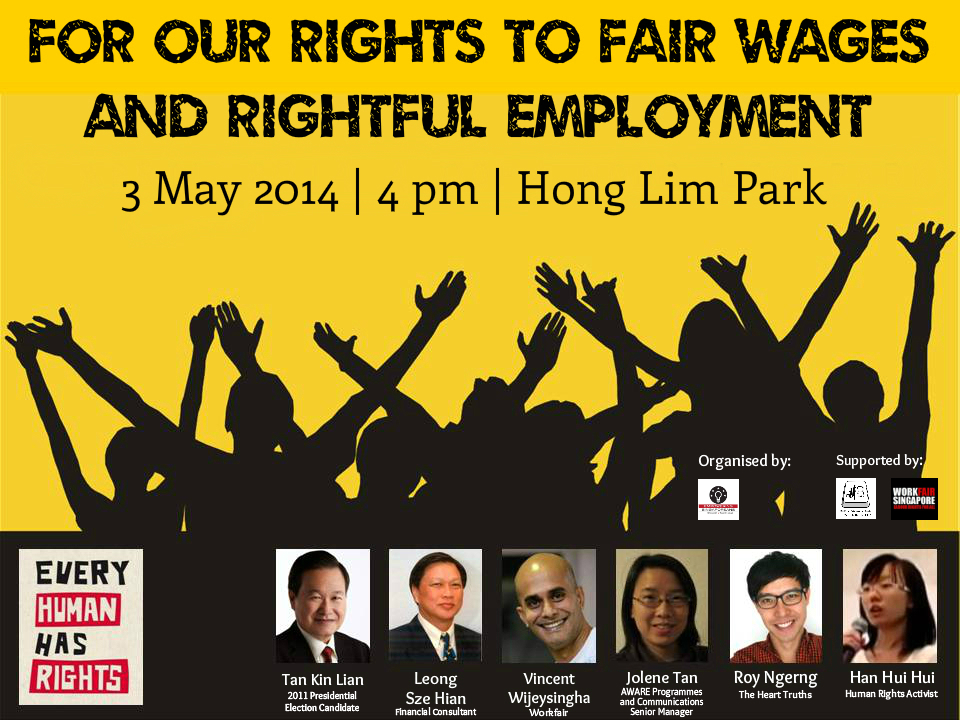By Leong Sze Hian, Han Hui Hui and Roy Ngerng
We went to Oslo, Norway earlier this month.
Norway has many things in common with Singapore. Norway has one of the highest GDP per capita in the world. So does Singapore. Norway has one of the world’s largest sovereign wealth funds. So does Singapore. And Norway also has one of the highest prices in the world. And so does Singapore – in fact, Singapore has now become even more expensive than Norway.
In this article, we take a quick comparison between the two countries – how do the two countries which look similar on the surface actually differ? More importantly, are Singaporeans better off or worse off?
Norway’s GDP per capita is PPP US$66,141. Singapore’s GDP per capita is PPP US$60,800. Norway and Singapore ranks as having the 4th and 5th highest GDP per capita in the world, respectively.
Chart
Norway and Singapore has similar population sizes too. Norway has a population of 5 million people while Singapore has a population of 5.3 million.
Chart
Norway’s sovereign wealth fund now stands at $838 billion. Singapore’s sovereign wealth funds, GIC and Temasek Holdings, together with the Monetary Authority of Singapore’s foreign reserves now make up an estimated $800 billion. Norway’s sovereign wealth funds ranks as the richest sovereign wealth fund in the world. GIC and Temasek Holdings rank 8th and 9th respectively.
Chart
According to the Economist Intelligence Unit, Singapore is now the most expensive place to live in the world. Oslo in Norway is the third most expensive, which means Singapore is now even more expensive than Norway to live in.
Chart
So, since Singapore is as rich as Norway and prices are just as expensive, how then does Singapore compare to Norway? Are the living standards in Singapore and Norway comparable too?
Actually, no. Even though Singapore is as expensive as Norway, Singaporeans actually earn much lesser than the Norwegians.
In fact, a low-wage worker in Norway (Accommodation and food service activities) earns a median income of $5,927 but a low-wage worker in Singapore (Cleaners, Labourers And Related Workers) would earn only $1,000. In other words, a low-wage worker in Norway earns 6 times more than a low-wage worker in Singapore.
Chart
And for the median income earner in Norway, he/she would earn $8,009. But in Singapore, a median income earner would earn only $3,250. This means that a median income earner in Norway earns 2.5 times more than a Singaporean.
Chart
The huge disparity in wages between Norway and Singapore would suggest a massive difference in purchasing power. If Singapore is now the most expensive place to live in the world and the cost of living is higher than Norway, and if Singaporeans earn significantly lower wages than the Norwegians, then Singaporeans would be severely underpaid, as compared to our counterparts.
To provide some perspective of the prices, we had compared the prices of the basic items between both countries.
First, let’s look at the prices of groceries and daily necessities in Norway and Singapore. For much of the groceries and basic essentials, prices are pretty similar in Norway and Singapore. For this comparison, we had chosen the cheapest of each product that we can find in the supermarkets. So, for the products, you will have a range of prices, some cheaper in Singapore and some in Norway.
Cherry tomatoes
Margarine
Soya sauce
Orange juice
Lipton tea costs about the same, but it is cheaper in Norway, perhaps because during English tea is a more regular habit in Europe.
Lipton tea
Bread
Potato chips
For the same number of rolls of toilet paper, it is also slightly cheaper in Norway.
Toilet paper
There are some items which are more expensive in Norway. Oil is about 80 cents more expensive.
Oil
Rice is a lot more expensive, partly because it is not a staple food in Europe and it is imported from Asia.
Rice
Sunsilk shampoo is more expensive by in Norway as well.
Sunsilk shampoo
But there is cheaper shampoo that you can buy in Norway.
Shampoo
Moving on, there are also many things that are cheaper in Norway than they are in Singapore. Nescafe coffee is $3 cheaper in Norway, for example. Again, this could be because Norway is more steep into drinking coffee.
Nescafe coffee
Cornflakes is a lot cheaper – less than half the price of Singapore’s.
Cornflakes
We found cheaper body wash in the supermarkets in Norway.
Body wash
Detergent is surprisingly very much cheaper.
Detergent
But what is perhaps most shocking is how cheap Pampers diapers are! They cost only about $2 in Norway but it is more than 10 times more expensive in Singapore!
Pampers diapers
From this quick comparison of the groceries and basic essentials, you can see that prices do not differ too much in Norway and Singapore. Does the same apply for the rest as well?
Next, we move on to housing.
If you want to buy a 3-room flat in Singapore, it would net you about $350,000. Let’s see how much $350,000 will be able buy you in Oslo, Norway. It would actually be able to buy you quite a nice 2-bedroom apartment in the centre of Oslo.
Chart
But this is comparing between a public and private house. What if we compare apple to apple, and compare the price of private housing in both countries? According to the Global Property Guide, Singapore is the 4th most expensive place in the world to buy an apartment.
Chart
Norway doesn’t figure on the list but when you compare the cost of Oslo, Norway and Luxembourg, it is actually cheaper to buy an apartment in Oslo, Norway (430,000 Euros for a 80 sq m apartment) than in Luxembourg (448,275 Euros for a 75 sq m apartment). Luxembourg ranks 16th on the list, which means that Norway doesn’t even rank in the top 15.
Chart
Chart
Thus you can that it is twice as cheap to buy an apartment in Oslo, Norway than in Singapore.
What if we compare the rentals?
According to ECA International, Singapore ranks as the 7th most expensive place in the world to rent a 3-bedroom apartment. Norway doesn’t even rank among the top 20.
Chart
So, there you go – public housing in Singapore is as expensive as private housing in Norway. And private housing in Norway is actually twice as cheap as private housing in Singapore, on a relative basis.
We next move on to transport. When it comes to the purchase of cars, Singapore wins hands down. According to a study done by Yahoo!, Singapore is the most expensive place to buy a car in the world. Singapore is more than twice as expensive to buy a car than in the second most expensive country.
Chart
According to Yahoo!, the price of a Toyota Corolla Altis in Singapore costs $135,988. According to Numbeo, to buy a Volkswagen Golf 1.4 90 KW Trendline, it costs $140,000. What about in Norway? It would cost $54,875 – or more than twice as cheap to buy the same car in Norway!
Chart
But of course, let’s also compare the prices of public transport. To buy a annual adult transport ticket to travel around Oslo, Norway, you need pay $1,359 for a year or $113 every month. In comparison, an adult monthly travel card in Singapore costs $120.
Chart
So, you can see that the prices of groceries and basic necessities in Norway and Singapore costs about the same. But when it comes to housing and cars, public housing in Singapore is as expensive as private housing in Norway, private housing and cars in Singapore is also more than twice as expensive in Singapore than in Norway. Finally, transport passes in Norway is also cheaper than in Singapore.
Taking note that the average Singapore earns only half of what a Norwegian earns and a low-income earner in Singapore earns less than one-fifth what a Norwegian earns, it might be clear at this point that the standard of living in Singapore is way off the mark – our livelihoods are very much dampened.
Let us finish off this comparison with the comparison of healthcare and education – two of the most important basic rights that all citizens should be able to have access to.
When it comes to education, education is free in Norway. This is what the Norwegian government says: “the Norwegian government considers access to higher education for all to be an important part of the Norwegian society. Thus, there are normally no tuition fees at state universities and university colleges in Norway.” In fact, not only is education free for Norwegians, education is also free for international students: “This also applies to foreign students, no matter which country you come from.”
For Singapore, to study in the public universities, Singaporeans have to pay a minimum of $7,850 a year to study. This is one of the most expensive, if not the most expensive university fees that any citizen has to pay to study in their public universities. Not only that, the Norwegian government would first provide free education for its citizens, then extend it to international students. In Singapore, it is the other way around – more than 50% of international graduate and under-undergraduate students are on scholarships, however only 6% of Singaporean students are on scholarships. In total, the Singapore government is spending about $400 million to sponsor international students to study in Singapore while Singaporeans have to pay $400 million to study in our public universities.
Chart
For health, it is a similar story. According to the Norwegian School of Economics, “The health care system in Norway ensures free basic medical services to all citizens and those registered as residents or working in Norway.” Also, “Public health care is basically free”. What is meant by this?
You see, in Norway, “There is an annual maximum limit for many cost-sharing requirements, above which out-of-pocket costs are waived.” As of last year, Norwegians only need to pay a maximum of $426 every year to see the doctor.
However, in Singapore, there is no cap on how much Singaporeans need to pay for healthcare, so much so that in 2012, there were “over 2,400 MediShield policyholders (who had to make) co-payments of over $10,000 each“.
In fact, on a per capita basis, Singaporeans actually have to spend the most out-of-pocket for healthcare. In fact, we spend more than twice as much as Norwegians on healthcare.
Chart
So, let’s give you a quick rundown of how much things cost in Norway and Singapore.
- For groceries and daily necessities, prices are about the same in Norway and Singapore.
- For housing and transport, private housing and cars are twice as expensive in Singapore than Norway, public housing in Singapore is as expensive as private housing in Norway and monthly transport passes are cheaper in Oslo, Norway than Singapore.
- For healthcare and education, it is basically free for Norwegians but Singaporeans pay the highest prices in the world to access these basic needs.
So, you see Singapore is now the most expensive place to live in the world and based on the comparison of the prices, you can see why Singapore is actually more expensive than Norway.
Not only that, Singaporeans also earn much lesser than Norwegians. Low-income workers in Norway earn about $5,000 whereas Singaporeans earn $1,000. Median income Singaporeans earn only about $3,000 but Norwegians earn $8,000.
What does this mean? This means that the purchasing power in Oslo/Norway is much higher than in Singapore. Not only that, Singapore also has the lowest purchasing power among the high-income countries.
Chart: UBS Prices and Earnings Report 2011
Chart: Cost of Living Index for Country 2014
This is because even though Singapore is now the most expensive place to live in the world, Singaporeans earn the lowest wages among the high-income countries.
Chart: International Labour Organisation Data collection on wages and income
But of course, we haven’t forgotten about tax and social security. It is a common assumption that Norway has one of the highest tax and social security rates in the world. However, this is not true.
For a low-income earner in Norway, he/she only needs to pay 35.2% into tax and social security. In comparison, a low-income earner would need to pay 37% into CPF.
Chart
And for a median income earner, a Norwegian need only pay 44.2% to tax and social security, while a Singaporean would pay 38% into tax and CPF.
Chart
Let’s take a look at what this mean in nominal amounts.
As mentioned, a low-income earner in Norway earns $5,927 and in Singapore, the person earns about $1,000. After tax, a low-income earner would still earn $3,840. However, a low-income earner in Singapore would only have $830, after deducting for Employee CPF. A Norwegian would still earn nearly 5 times more than a Singaporean.
Chart
Also, pre-tax, a median income earner in Norway earns $8,009 and a Singaporean earns $3,250. After tax and social security, the Norwegian would have $4,469 left but for a Singaporean, he/she would only have $2,665 left, after tax and Employee CPF. A Norwegian would earn more than 1.5 times more than a Singaporean.
Chart
So you see, even though a Norwegian has to pay a relatively higher tax and social security than a Singaporean, because they are paid higher wages in the first place, even after deducting for tax and social security, they still have more left than Singaporeans. This explains their much higher purchasing power than Singaporeans.
Now, take into account that in Norway, groceries and daily necessities cost about the same as in Singapore, but housing and transport is cheaper, and healthcare and education is free, this means that on the whole, Norway is relatively much cheaper than Singapore. For the value of our money, Singaporeans are getting way lesser than a Norwegian.
Also, you have to take note that of the income that is left after tax and social security, a Norwegian doesn’t have to use this income to pay for healthcare and education. However, for a Singaporean, we would still have to use this income to pay for healthcare and education. What may this means if a person falls sick 10 times over the course of a year, – instead of $800, a low-income Singaporean might only have about $650 of comparable disposable income and for a median income Singaporean, instead of $2,665, he/she might only have $2,300 of comparable disposable income. So, if a Singaporean would need to pay for their children’s education fees and go for a major operation, you can imagine how much we would have to lose from our wages whereas for a Norwegian, their children and even themselves can study, and go for major operations with peace of mind.
Let us put this into a bit of perspective for you. For a low-income earner in Norway, after tax and social security, he/she earns $3,840. But for the poorer 50% of Singaporeans, after tax and CPF, we earn less than $2.665. Do you know what this means? This means that for possibly the poorer 70% of Singaporeans, we are actually poorer than a cleaner in Norway, from a total cashflow perspective.
Or in other words, a cleaner in Norway can actually live a much better life than 70% of Singaporeans. But this has yet to account for the additional healthcare and education that Singaporeans have to spend out of our own pockets which the Norwegians don’t have to. If you add this into the mix, this means that possibly the poorest 80% of Singaporeans are actually poorer than even a cleaner in Norway.
Chart
Does this come as a shock for you? Because the cost of living is higher in Singapore than in Norway but wages are several times lower, not only do Singaporeans have the lowest purchasing power in the world, up to 80% of Singaporeans are poorer than a cleaner in Norway.
Perhaps now it would make sense as to why for the poorest 30% of households in Singapore, they have to spend 105% to 151% of their incomes.
Chart
And how for middle-income Singaporeans, two-thirds of us say that we only have enough to buy what we need but not any more else.
Chart
Perhaps let us give you just a few more statistics to put things into perspective.
So, 80% of Singaporeans are poorer than a cleaner in Norway. Do you know that the richest 15% in Singapore earns as much income as the poorest 85% of Singaporeans?
Chart
Do you also know that even though Singaporeans earn the lowest wages among the high-income countries, the highest-income earners actually earn the highest salaries among the high-income countries?
Chart: ECA Global Perspectives National Salary Comparison 2012
Not only that, the highest-income earners also pay the lowest tax and social security among the high-income countries.
Chart: KPMG’s Individual Income Tax and Social Security Rate Survey 2012
And the majority of poorer Singaporeans actually pay higher tax and social security (as a proportion of their income) than the richest Singaporeans.
Chart
In fact, since 1995, the share of income that is going to the richest 10% has increased from 30% to 42%.
Chart: The World Top Incomes Database
And for the richest 5% in Singapore, their share of income has grown even faster, from 22% to 31%.
Chart: The World Top Incomes Database
If you follow the logic, what this means is that for the poorest 80% of Singaporeans, we may be poorer than a cleaner in Norway, but for the richest 10% to 20% in Singapore, they might actually be even richer than a high-income earner in Norway.
Indeed, when it comes to having the most billionaires in the world, Singapore ranks 18th while Norway ranks a distant 39th.
Chart
Not only that, Singapore has the 4th largest concentration of billionaires in the world but Norway doesn’t even figure in the top 10.
Chart
So, that’s for the wealth at the top – what if we look at the bottom, at the poverty rate? Singapore actually has the highest poverty rate among the high-income countries and even among many Asian countries – we have a poverty rate similar to Third World countries.
Chart
It is thus very clear that the income inequality in Singapore is very wide – in fact, Singapore has the worst income inequality among the high-income countries and one of the highest income inequalities in the world.
Chart: An Overview of Growing Income Inequalities in OECD Countries: Main Findings, Key Household Income Trends, 2013
There is no doubt that the majority of Singaporeans are poorer than even the poor in other high-income countries while the richest in Singapore are even richer than the rich in other high-income countries.
In fact, when we spoke to a labour union in Oslo, we were informed that their prime minister earns only S$300,000. And this, for Norwegians, is already considered a “very high” salary, we were told.
In comparison, the Singapore prime minister earns US$2.2 million every year. In other words, the Singapore prime minister earns more than 7 times what the Norwegian prime minister earns.
Chart
When we heard this, we were somewhat taken aback – $300,000 is already “very high”. The immediate thought that would go into your head is – doesn’t this mean paying millions for our prime minister and ministers might actually be too high, especially so when 80% of Singaporeans are even poorer than a cleaner in Norway? This doesn’t quite make sense.
Honestly, it was a bit difficult to get our heads around how unequal the income distribution in Singapore is, especially in light of how the poorest 30% have to go into perpetual chronic debt for the rest of our lives and how nearly 80% of Singaporeans are actually unable to meet the CPF Minimum Sum and are unable to retire.
Chart
At the current state of Singapore’s sociopolitical climate, most Singaporeans might never be able to have enough to retire.
Perhaps this explains why we are now hearing of news of how Singaporeans have to kill their children because they cannot afford to live, older Singaporeans have worked till their deaths and how Singaporeans have chosen to die instead of seeking medical treatment.
Perhaps some of the questions we have to ask ourselves at this point is – for a country such as Singapore which has attained the level of wealth that Singapore has, is it morally right that so many of our citizens still have to be trapped in poverty and live in perpetual debt, where they are unable to retire and some have chosen to die? Is it also morally responsible for a government to allow wages to be so depressed that the majority of Singaporeans earn enough to barely survive? Perhaps what might be more incisive would be the question of how the majority of Singaporeans are only able to barely earn enough to make ends meet, but for the richest in Singapore, they actually live a better live than almost any other rich person in the world. It is perhaps a scary thought that for the majority of Singaporeans, we aren’t even better off than a cleaner in Norway but for most of the rich in Singapore, they may even better off than the prime minister in Norway.
Once you have gone to Norway and other developed countries which have a similar GDP per capita as Singapore, then it strikes you. For other cities with a similar cost of living as Singapore, Japan has a minimum wage of $2,000, Australia has a minimum wage of $3,000 and Norway’s cleaners earn $5,000. To put this in perspective, 30% to 40% of Singaporeans earn less than $2,000 or less than the poor in Japan, 50% of Singaporeans earn less than the poor in Australia and 70% in Singapore earn less than a cleaner in Norway.
Chart
When we realise the situation outside of Singapore, it makes you wonder why the lives of Singaporeans have been depressed – and you begin to question the reasons. Why is it that these other countries are able to ensure that their citizens have a more equal standard of living, where the gap between the rich and the poor isn’t so wide?
You begin to ask – does this have something to do with how our government rewards themselves with such high salaries? Now that it has been shown by The Economist that Singapore is 5th on the crony capitalism index, or the 5th easiest for someone to get rich if they are politically affiliated, does this have something to do with how the richest in Singapore have kept seeing their wealth increase while the rest of us Singaporeans seem to stagnate.
This is perhaps an issue that we can discuss in due time, and something which much research has already helped to answer. The answer is clear.
This coming Saturday, join us as we organise an event to advocate for the rights of workers in Singapore to receive fair wages and rightful employment. At a time where the wage disparity in Singapore is so wide and where 30% of Singaporeans are living in a perpetual debt trap, there is a responsibility among Singaporeans to advocate for higher wages to protect the livelihoods of Singaporeans.
It is only right and a moral responsibility that as Singapore has attained a level of wealth such as ours and where the prices of things have become so expensive that we need to protect our people and ensure that everyone in Singapore are able to have peace of mind and feel safe in the comfort of our country – Singapore.
This is the least we should do, and the least a morally-responsible government should do.
This Saturday, join us as we fight for the rights of Singaporeans.
You can join the Facebook event page here.
Roy Ngerng
*The author blogs at www.TheHeartTruths.com

